| Lev | Name | Size | Notes | Thumbnail |
| 1 | 149th St Pier | 8 x 8 | This small shelf layout depicts the Erie RR's 149th Street Pier in the early 1940s. This was a very busy spot for the Erie with the ferry arriving 3 times a day normally. Your task is pretty straight-forward - unload and reload the car ferry as quickly as possible. There are a couple of storage yard tracks [CF and Y ] where you can sort your incoming cars; or, store cars destined for the outbound ferry. |
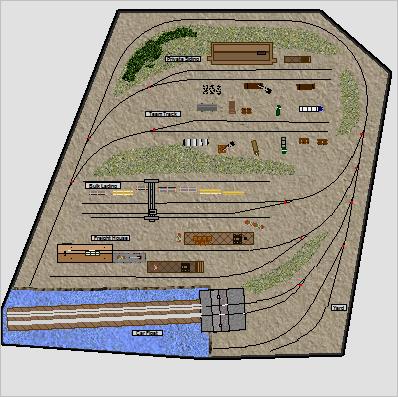 |
| 1 | 20th St.Yard - 1960 | 8 x 53 | This is another intense switching layout. This one is inspired by a Swedish modeller named Stein Jr. who, due to his limited available space, concentrated on getting the maximum amount of switching into as realistic setting as possible. The time period modelled is the mid-1950s steam to diesel transition era in an eastern American city. The 20th Street Yard is a small 3 - 4 track space in a compact industrial zone which features several small light manufacturers. The 20th St. yard is usually almost empty and is used by the local switch crews to stage their various shunting moves. |
 |
| 1 | Agrium | 2 x 6 | This N scale layout by Byron Henderson packs a lot of operational action into a 4 x 10 layout. Mainline and Interchange lines and lots of shunting about the landscape are yours to enjoy. | 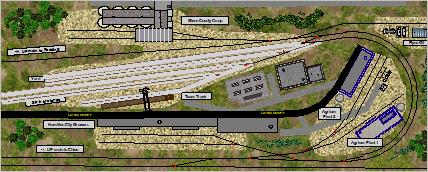 |
| 1 | Ajax Junction | 6 x 23 | The Ajax junction is an imaginary meeting point in central Pennsylvania between the PRR and the NYC in the late 1940s. Both railroads have customers in the town and work them, while they deliver cars to the interchange tracks for each other. |
 |
| 1 | Bardsley | 3 x 17 | Bardsley is a mid-size town in the US north west, in the 1920s. This shelf plan contains a couple of runaround tracks and a small detachable yard. The main industry in this town is the cement plant but there is a good blend of other small and mid-sized industries to keep your switch crew busy. |  |
| 1 | Beckon Forth | 6 x 12 | Beckon Forth consists of a decent sized industrial zone divided by a river. This small 4 x 8 layout is set in the 1920s era and involves a day in the life of the local switch crew as they work their "turn" job and service all the customers on both sides of the river. | 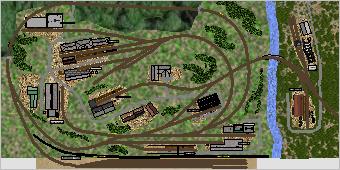 |
| 1 | Beckon Forth | 6 x 12 | Beckon Forth consists of a decent sized industrial zone divided by a river. This small 4 x 8 layout is set in the 1920s era and involves a day in the life of the local switch crew as they work their "turn" job and service all the customers on both sides of the river. | 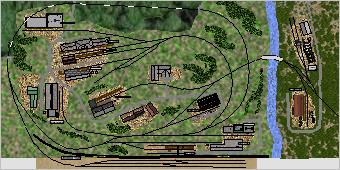 |
| 1 | Belmont Turn | 6 x 26 | This shelf layout, set in the steam to diesel transition era of the 1950s, focuses on a Swift Meat Packing Plant. There are also several other medium industries in town requiring regular service. All traffic enters and exits the modest town of Belmont from the staging yard on the east side. |  |
| 1 | Browning Street Zone | 3 x 27 | Browning Street Zone is a small modular layout with an extension for added staging. It would be a good layout to practice your switching skills. |  |
| 1 | Burnt Cabin | 2 x 19 | This modular layout is based on Robert Pethoud's Fall Creek Branch which appeared in the March 2016 issue of Model Railroader. This plan incorporates a TimeSaver puzzle with some more generous space allotments. The time period is early 1900's when steam is KING and small towns lived or died based on rail connections. |  |
| 1 | Cedar Creek Industrial Park | 4 x 38 | Cedar Creek is a mid-sized city on this branch line which sees daily switch services from either east or west ends. It also has an PRS interchange track in the centre of its town. The PRS has track rights to run directly into Cedar Creek a couple of time per week to drop off a block of cars for the local tramp to spot at customer locations in town. The PRS will also pick up any outbound cars spotted on track PRI before its arrival and then head home eastbound. Your RS 3 local tramp will start its first trip into town, travelling light, from the West Yard. It will switch all industries and continue to East Yard to pick up any new cars bound for Cedar Creek there. |
 |
| 1 | Chexton Industrial Estate | 3 x 28 | This Estate is an fictional commercial zone in a large metropolitan area in the UK which is still being served by rail in the early 1960s. This module displays some light industries which generate suitable mixed goods traffic. This zone is being serviced by a small BR shunter located in the East Yard. As driver, you may need to put together your train from the labeled cars standing on the East Yard roads. Once you head out, you will also need to pull any cars which are labeled. |
 |
| 1 | Cline Street | 5 x 38 | Cline Street is a shelf layout based upon a fictional modern era industrial zone in a typical large city. There are some large industries but traffic patterns are not heavy with most receiving their raw material by rail but shipping their end goods by track. There is a small staging area on the south east where all of the traffic originates. The west end of the main line also serves as an industry with some bridge traffic flowing outbound over these rails. |  |
| 1 | Dearborn Industrial Park | 25 x 26 | The Dearborn Industrial Park is a shelf type layout, set in the modern era on a Class 1 railroad. The goal of this layout is to improve your switching skills. You have several trailing point and facing point switches with only one runaround track to assist your moves. | 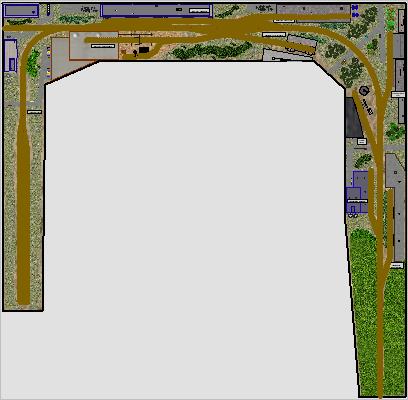 |
| 1 | Eastridge | 7 x 12 | Eastridge, which features plenty of operations, is based on a Byron Henderson N scale plan for a 4 x 8 layout set in the mid-1930s era. While this looks like a compact layout, getting from the Yard to the coal mine is a long haul. There are 10 customer sites split between the 2 major towns - Weston and Eastridge. You will need to use your runaround tracks wisely to minimise the switch moves you will need to make to complete your switch lists. |
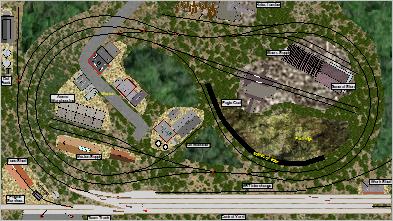 |
| 1 | Echo Jct | 8 x 40 | Echo Jct. is part of an NYC branch which terminates at a junction point with the Penn Central. It has its own small yard, engine facilities including a small roundhouse. The town also features a few local customers who depend on good rail service and connections to get their products to market. |  |
| 1 | Freezer Burn | 2 x 10 | This plan is from CJ Freezer's Track Plans for Various Locations by PECO, used with permission [July 2012]. It is based on his Plan 30 for a terminal branch station in central England. Like many of Freezer's plans the focus is on operating some goods and passenger trains in some very restricted spaces. |
 |
| 1 | Grove Bay Jct | 4 x 38 | Grove Bay Jct. is an imagined connection between the Milwaukee Road and the Wisconsin Southern. The Grove Bay Turn does a daily run into town to switch the local industries and to service the interchange with the Wisconsin Southern. The main traffic generator is the United Co-op Mill which ships 6 - 8 loads daily. Your first task is to switch the mill - pull the loads and drop the empties. Then move on to the rest of your switch list. |  |
| 1 | Hiawatha Ave. 2009 | 4 x 125 | This is the protoypical configuration of the track work and the industries located along Hiawatha Ave., Minneapolis, MN. in 2009. A few of the grain elevators are now empty and no longer rail served, but there are still 2 large mills to switch and a few other smaller industries as well. The typical "mill job" would see the switcher arrive at the west side from the main yard 2 miles distant. It would spot 20 - 30 hoppers at the mills and pull about the same number of loaded hoppers. At the same time, there was always some other cars to pull and spot at the other industries. |  |
| 1 | IOTA | 2 x 9 | This version of Iota closely follows Andrew Martin's layout of the same name, with the exception that a yard & interchange were added to enhance OPS capability. The Pedlar comes into Iota and must work through its cut of cars needing to be spotted or pulled. It must also run the covered hoppers through the Eagle Flour Mill [maxmium speed is 5 mph] and then deal with them per their updated shipping labels. |  |
| 1 | Iron Bridge | 9 x 14 | Iron Bridge is a small fictional seaport town with a coal dock and a fuel depot to service on a daily basis. As well there are a couple of marine type industries to switch. Your incoming cars will come off the Main East yard and you will need to use the yard on the plan to sort your train before delivering the cars per their routing labels. | 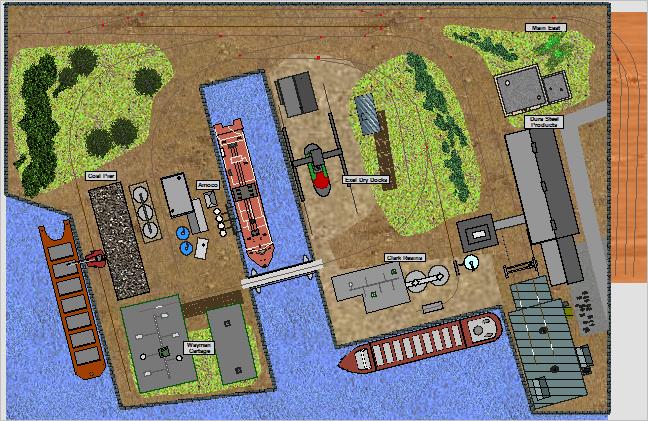 |
| 1 | Ithaca NY | 3 x 35 | Ithaca NY is an "imagined" industrial complex located near this mid-sized town in New York state. It is served by a short line railroad which receives cars from a nearby interchange [off plan]. The time period is the 1960 - 1980s modern era. There are several industries to serve, most of them with either facing point or trailing point drops. But there is one switchback link which may prove a bit of a challenge. |
 |
| 1 | Jamestown | 10 x 18 | Jamestown is a fictional branch line off of the Norfolk Western RR during the late steam era. The town switcher services all the local customers and returns the empties back to the main NW yard on a daily basis. There is also a small NW train which hauls cars destined for Jamestown up to the runaround track where the town switcher takes charge of them. |
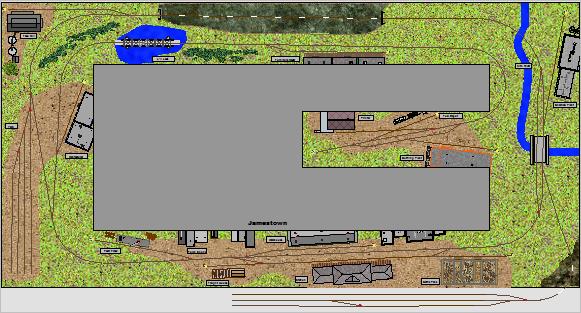 |
| 1 | Judson Valley | 6 x 37 | Judson Valley is a busy "bridge" hot spot at the mid-point in a large division of a class 1 railroad in the US north east in the modern era. Judson Valley has a small "sorting yard" from which it services its varied customers. A significant amount of their rail traffic involves moving cars both east and west to the larger division yards. |  |
| 1 | Latchford | 6 x 50 | Latchford is a well equipped station /terminus complete with car shops and good sized engine and goods sheds. There are also ample local merchants to make things interesting. Your initial switch list will include BOTH passenger and goods vans to be shunted. You may choose to send some passenger trains on their way and to bring the suburban trains to the platform area. All engines arriving in Latchford should use the platform "escape" track after disembarking passengers to proceed to the turntable for water & coal and to set the engine in the correct direction for the return trip. After completing this work, you would then proceed with the goods wagons to spot and pull at the various siding required. |
 |
| 1 | Lockport | 2 x 11 | Lockport is a busy mid-sized centre on the US north east coast in the 1950s era. This is an economy focused on fish with processing plants and a cannery. As well there are a couple of smaller, related industries to service as well. There is also a connection, off-line, to New York for any cars headed westbound. Your SW1 is initially located in the Yard [Y] with its 3 idler cars for accessing the car float. |
 |
| 1 | Macklin Street sub | 5 x 14 | This shelf type layout is based in the modern era and represents a busy industrial district on the US west coast. The variety of industries involved will add to the challenge of your assignment. | 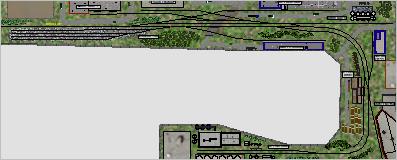 |
| 1 | Madras | 3 x 12 | Madras' industrial park contains only 6 industries with 7 drop spots. But it can be a real challenge to complete each switch list since there is only one runaround track. Carefully planning is essential. Enjoy |
 |
| 1 | Marplain Terminal | 3 x 15 | Marplain Terminal is N scale switching layout, designed to fit on a shelf. We added a fiddle yard to the right hand side to make OPS interesting and varied. There are several medium sized industries in this middle American town set in the early 1950s |  |
| 1 | Meafurst | 2 x 18 | This modular layout represents a branch off the main Santa Fe line in the early 1960s. It represents a mid-sized town in the US northwest with a few small and medium light industries which are still being served by rail. There is a small city yard, West Staging and an SP interchange on the west side of the layout. While on the east side you will find the East Staging area. |  |
| 1 | Minnesota Transfer Railway | 4 x 23 | This shelf type layout is inspired by the late Stein Rypern's 32 St. Yard. Stein was a big believer in providing lots of OPS in a small space. SteinJR, as Rypern was known on-line, provided many practical and sensible designs on bulletin boards in Europe and also for Model Railroader and the Layout Design SIG. The Minnesota Transfer Railway was exactly that. It serviced a few customers while mainly spending its efforts forwarding cars along their journey once they reached the MTR's home turf |
 |
| 1 | Mount Brydges Branch | 2 x 34 | The Mount Brydges Branch is a fictitious line off of the New York Central RR in upstate New York. It services several mixed light industries and a small sorting yard in the town. The Branch has connections to the east for New York City and, in the west to routes heading to Chicago. There is also an interchange on the west side of town which handles some daily traffic flow to the Penn Central RR. Passenger service has ended but local freight traffic is still robust. Your ride today, an SW 1 known as the "Blue Liner" is waiting in Elwood Yard. |  |
| 1 | Progressive Rail - Airlake MN | 4 x 18 | Progressive Rail, a shortline serving northern Minnesota, services all of the major industries within this business park in AirLake MN. Most of the industries are focused on natural resource and petroleum based production and generate regular traffic daily for the PGR. This modular layout is based on a George Baustert design of the Progressive Rail Terminal. This current version includes a runaround track which the prototype does NOT have and, it also includes a designated Interchange track to the CPR within the layout itself. |
 |
| 1 | Rimfire & Latigo RR | 3 x 6 | This 4 x 8 plan by Dave Meek, features an On3 short line in the mountains of Colorado. Rimfire is a camp town based on a silver mine, while Lattigo is a town in the lowlands which is home to a few local industries. There is an unseen "interchange" with the RGS which is both the major source of supplies for the R&L and its clients, and it also gives the locals access to the broader export markets for their finished goods and raw materials. | 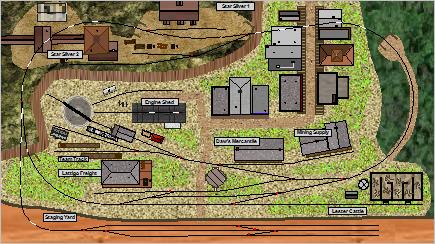 |
| 1 | River Oaks branch | 15 x 20 | The River Oaks branch is set in the US mid-west in the early 1950s time frame. The branch primarily serves the Union Packers plant and a Deere Farm Equipment factory. But it also includes a sawmill operation, a lumber supply depot, a fuel dealer, a feed mill and a farmer's warehouse. There is a small classification / staging yard on the east side and it has a typical road switcher which handles the daily runs to service the clients. You may decide to service Union Packers first becuase it has the highest volume of cars for pick up and spots. There are a couple of runaround tracks and use them wisely. On the outbound journey the train is led by the engine. For the return the tender leads the engine as it pills its drag home. A wise engineer brings his engine home when his run is completed. |
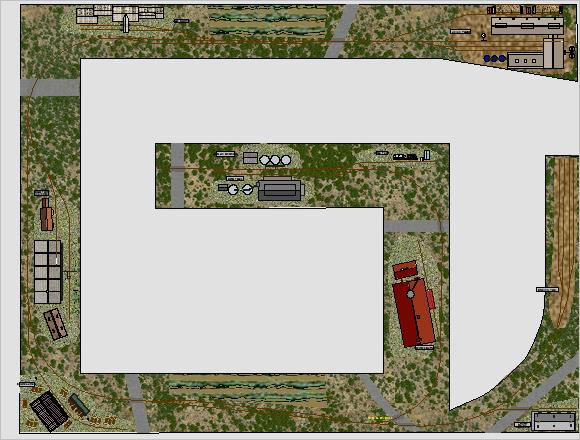 |
| 1 | Sandstrom Park | 3 x 44 | ThIS shelf layout is set in the modern era and it represents a business industrial park in the east end of Toronto, Ontario. There are a couple of runarounds to asssit you in your switching tasks, use them wisely. |  |
| 1 | Spotsville | 6 x 25 | Spotsville is a fictional shelf layout with a "hidden" staging yard on the south east side. There are only 3 rail served industries in this industrial zone BUT there are 21 defined spots where these customers want set outs and pick ups placed. There are a couple of run-around tracks to help you complete your task. |
 |
| 1 | Stearns | 11 x 16 | This modular layout represents a fictional short line branch off the main C&O line in the early 1960s. It depicts a mid-sized town in the eastern US with a number of small and medium light industries which are still being served by rail in this time period. There are 2 small staging yards at either end of the layout whihc represent "far away" customers / suppliers. | 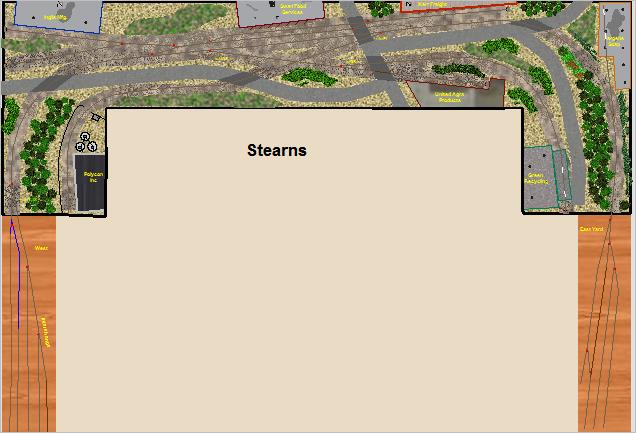 |
| 1 | Switching Black Label Brewery | 6 x 23 | This plan is an adaptation from Model Railroader's article - Industries You Can Model: Brewery. The plan depicts the various buildings which make up a typical large scale brewery. There is a separate Coal House to receive the fuel to power the other buildings. The mid-sized grain elevator stores various grains, hops and malts used to make ale. A corn syrup facility provides the color and sweetener for the ale. The heart of the operation though is the brew house and the bottling plant/warehouse. There are specifc tracks dedicated to each of these specialized buildings which keeps the brewery switcher busy shunting cars onto and off of the property all day long. |  |
| 1 | Taylorville | 9 x 16 | Taylorville is a shelf layout depicting a small mid-west town with a small staging yard and several agrarian based businesses and some light manufacturing industries for the local switcher to service. The runaround limits your moves so careful planning is essential/ | 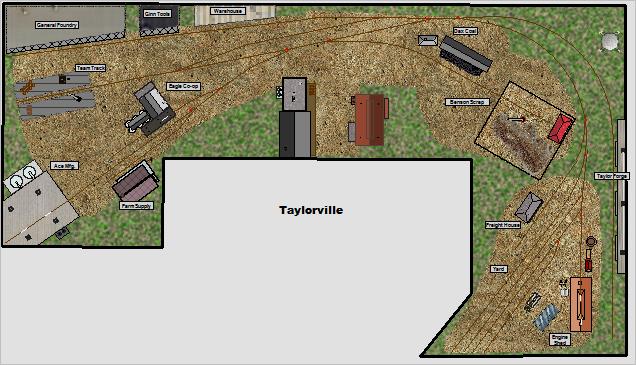 |
| 1 | Toledo Centre Branch | 6 x 21 | This is a complex and challenging switching layout on a shelf plan inspired by the Toledo plan from Model Railroader in 2014. There is a cluster of mid-sized industries in Toledo's centre district which, due to space constraints, are labor intensive to switch. But business is good and profitable. So a couple of small switch engines tend to the needs of these customers and run out to a nearby larger yard to exchange cars. There are a couple of switchbacks which will require careful consideration when switching. There are also a couple of useful runaround tracks to assist you. Plan carefully when setting up your runs. |
 |
| 1 | UP Council Bluffs Subdivision | 4 x 34 | This modern day virtual layout reflects the track work and local industries on the UP's Council Bluffs Iowa branch. There are a few large volume industries - the grain mill, the cement plant, the auto plant and the transload area whihc are handled by the road switchers in block movements. There are also a few smaller customers and a team track area which handles individual car movements. All in all, there is plenty of action and some of those bulk movements can be tricky. Enjoy. |
 |
| 1 | UP Switch Challenge | 1 x 10 | This shelf layout, based on a design by Andrew Martin, represents a common site in many North American cities and towns, namely a small industrial area with some rail served industries and limited track space. Careful planning will be required to complete the various switch moves here. |
 |
| 1 | Warwick | 6 x 49 | Warwick is a typical small north east city. Local industries are based on light manufacturing and agriculture. In the late 1950s, there is still sufficient local traffic to send out a daily pedlar to spot new loads and pull out loads and empties bound for distant customers. On the far left side, there is an interchange track to the Penn Central lines. Your daily switcher is a travel weary S 1 located in the yard throat. |
 |
| 1 | Waterloo spur | 6 x 25 | The Waterloo Spur,as depicted here,is a fictional extension off the CN mainline which runs through the area. The time period is the early 1950s. There are several local light industries and a small grain elevator along the line for you to switch on a daily basis. Most of the pick ups will be returned to Brenner Yard [BY] before being routed elsewhere. On the east side of the layout, there is also a connection [GEX] to the Brampton Branch where you may find some additional cars to spot on this spur. |
 |
| 1 | Weatherbee St - Detroit MI | 5 x 67 | This industrial spur is located nearby Weatherbee Street in Detroit Michigan. There are 5 active customers - PDI plastic pellet transloading spot, Pillsbury , a scrap yard, Detroit Mill Supply and a building supply yard. This spur is switched twice weekly by the shortline DCRR. All incoming and outgoing cars are routed to the Staging Yard |  |
| 1 | Windemere | 4 x 49 | Windemere is a mid sized city in the American industrial heartland. It has a number of small and medium rail served light industries. To assist with your pulling and spotting of cars, all industries are laid out in alphabetical order. |
 |
| 1 | Worcester Street | 2 x 29 | Worcester Street is a modular layout representing a ver industry intense zone in a larger American city. Your assigned cars will be found at the Worcester St. yard on the right. You will have a small industrial yard to temporarily store cars as required. |  |
| 1 | WP San Jose CA | 6 x 70 | San Jose CA is California's third largest city. This layout looks at San Jose in the early 1960s when the city was transitioning from an agricultural based economy to a modern industrial manufacturing, high tech one. What is depicted is the Western Pacific's small Williams Yard, some of the Seventh Street spurs along with the interchange with the Southern Pacific. There is one switch engine on the WP to handle the traffic to the various sites. |  |
| 1 | Zone 4 Lubbock Tx | 4 x 25 | This shelf layout is based on the CLIC chart for a smallpart of Lubbock Texas in the late 1930's era. The largest customer is West Texas Compress with fairly regular daily traffic. This zone is handled by a small switcher running out of the main yard a few miles to the west. |  |
| 2 | Alcos in the Alcove | 10 x 16 | This is a shelf layout design from Byron Henderson which appeared in the July, 2009 issue (#3) of Model-Railroad-Hobbyist media-zine. Byron combined operating fun and modeling challenge in a 3' x 5' space. This plan is based on the Sturtevant, Wisconsin, a Milwaukee Road station which is a unique design since it served two different MILW lines at a near 90-degree crossing. It's also fairly large for a station, so Byron decided to place it at the far corner of the alcove shelf. This allowed him to provide just the suggestion of a crossing line without using much space. Since he wanted more of a granger theme, he included an ADM Grain Elevator, a County Co-Op along with a small manufacturing plant - A.C. Brown Manufacturing. |
 |
| 2 | Alice Street Yard | 11 x 20 | This layout is based on an article and track plan featured in the 2014 edition of Model Railroad Planning (Kalmbach Publishing). The AT&SF at one time had it's own "navy" consisting of some car barges and a few tugboats operating in the San Francisco Bay area. The Alice Street Yard is one of the terminals served by that "navy" The track plan is mostly faithful to the prototype including a rarely used connection with the Southern Pacific RR. After exiting this screen, please press F1 again to view an explanation of operations on this layout. |
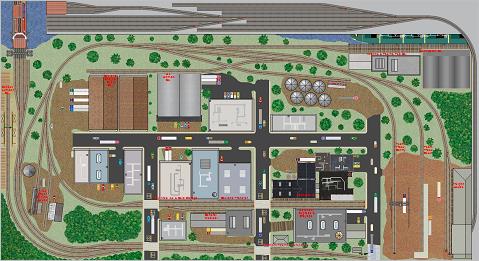 |
| 2 | Anchor Bridge Route | 19 x 35 | Anchor Bridge Route [ABR] supplies a link for a two shortlines and services an interchange with the Chesapeake & Ohio. The ABR provides service to its on-line customers while moving the freight for its larger regional carriers. All the industries in each town are labeled to match the alpha designation for that town. This should assist you when putting your train in delivery order. | 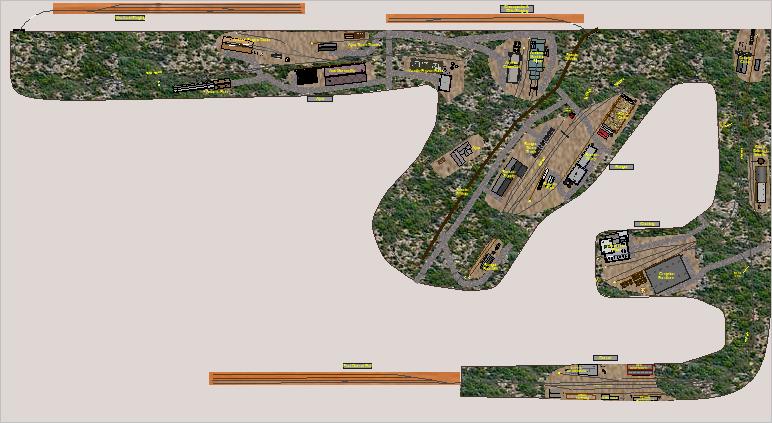 |
| 2 | Assegai Kop | 5 x 12 | The railhead at Assegai Kop is the interchange for dispatching copper ore mined on the Kop to Port Elizabeth. All trains climbing the Kop must use an articulated engine. Short trains are the norm and you may need to run more than one train to complete your switchlist. The term Kop in Afrikaans means a Terraced Hill or a Peak, the Boers named Assegai Kop after the short throwing spear used by Zulu Warriors. |
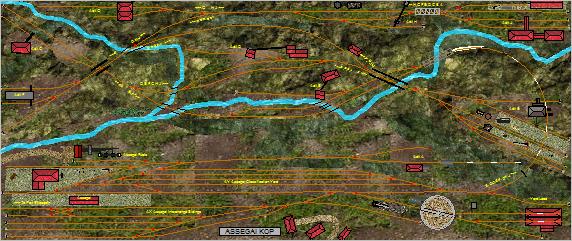 |
| 2 | Baker Sub | 17 x 34 | The Baker Sub is a room sized layout depicting a small north-eastern subdivision of a mjor class 1 railroad in the 1920s. There are a couple of branches which stretch out from the hub at Baker. Each town has a few mixed industries to service. Runarounds are limited so plan your trips carefully. The Staging Yard on the east side of the layout is the origin and destination for many of the raw materials which are needed by the local industries to produce their finished goods which, in turn, are shipped to far away markets via the Staging area. |
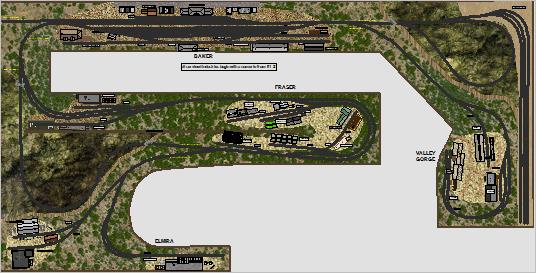 |
| 2 | Bay Street Connecting RR | 18 x 19 | This Ed Serley plan is based on a New York terminal railroad in the 1930s which received all interchanged cars via car floats. The switch engines then drag the new cars to their small classification yard on the south side, to sort for the correct warehouse or pier. All outbound cars are gathered and then returned to the storage sidings along side the car float dock for loading later in the day. Lots of intense switching action here. | 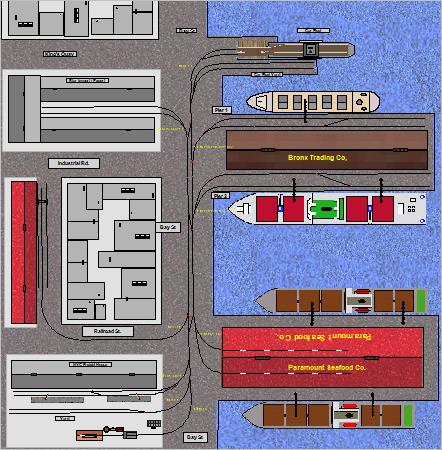 |
| 2 | Block Line | 20 x 32 | This plan is an adaptation of Greg Johnson's Clinton Branch which appeared in the Layout Design Journal. The layout represents a portion of the busy industrial area near Vernon California in 2005, where there are numerous trains running in all 4 compass directions. The largest area customer is the ADM Flour Mill which receives about 30 loads daily. The remaining customers are all light industries with regular but smaller traffic demands. |
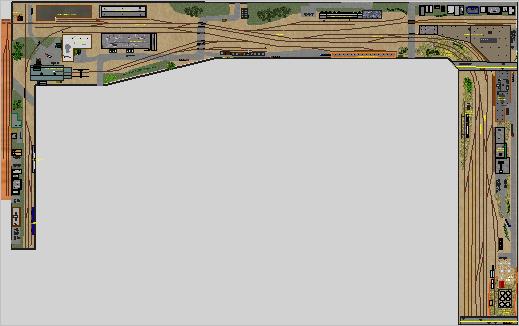 |
| 2 | Blue Mountain RR | 12 x 34 | Coal is king for the Blue Mountain RR, a room sized point-to-point plan, set in the 1920s. There are 2 major mines on this short line which generate much of its daily traffic. But due to the rugged mountain sides, trains are often double-headed when carrying a full load of black gold down to market. As well there are some smaller industries along the country side and an interchange with the PGI in the lower left corner to service. The three stations on the plan do require passenger service which is often provided via a "mixed" train. This plan is inspired by John Armstong's Ouachita & Ozark RR. |
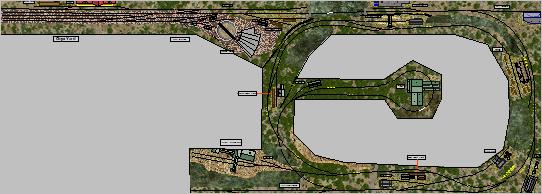 |
| 2 | Burnham IL | 12 x 24 | This room sized layout is loosely based on Burnham, Illinois in the late 1940s transition era. It was a mid-sized mixed industrial city within the metro-Chicago area. The main line runs through the city and there is a network of staging tracks connecting to various local industries, including a large brewery complex. All rail traffic originates from the staging area which in turn simulates traffic both east and west bound. | 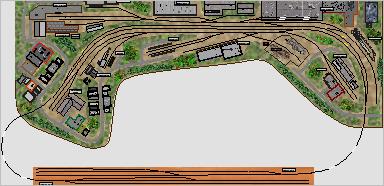 |
| 2 | Chesterton | 9 x 21 | Chesterton is a fictional city located in the industrial heart land of the UK midlands where goods traffic remained a vibrant part of the railways' business so that there is a daily run of a unit train of aggregates from the quarry and cement hoppers from Tri-Mix Cement. The West Chester shunters will handle yard duties and will switch all industries from Abbott Engineering through to Durham Fine Furniture. Before the end of their shift, they collect all cars bound for western ports and deliver them to the staging roads for further processing. | 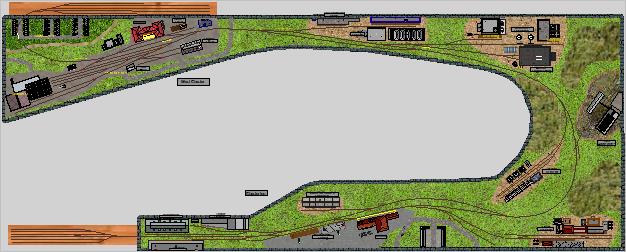 |
| 2 | Chicago Industrial | 12 x 21 | Based on and adapted from a Google roadmaps view from 2005, this layout depicts the South Woodlawn and South Dorchester Ave. industrial area in Chicago. It includes all of the actual industries which the Norfolk Southern serves in the area. We have added an interchange with the Chicago Belt Line Railway which moves cars to the many yards in the immediate Chicago metro area. | 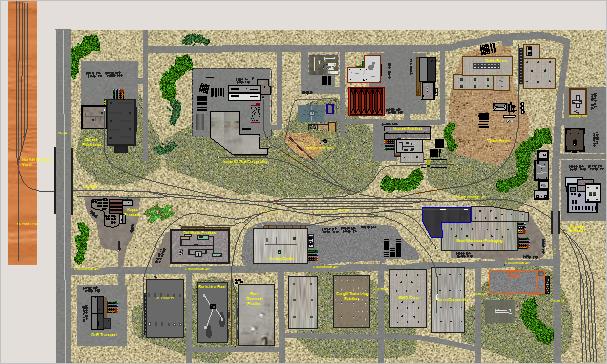 |
| 2 | Clappison Junction -Enlarged | 11 x 20 | Clappison Junction is nearby a cricital interchange point on the WNR with the larger SP network. There is a small yard and a few industries to serve, with the largest customer being a small coal mine. Still there's lots of action and switching duties to be performed. | 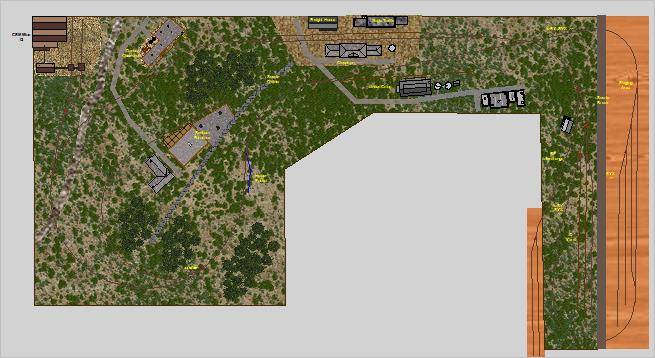 |
| 2 | Clayton | 11 x 32 | Clayton is a typical, modern mid sized city with a small yard from which the local crews work to switch the various light industries and food service facilities located within its city limits. You will need to make good use of the passing sidings to complete your switch assignments | 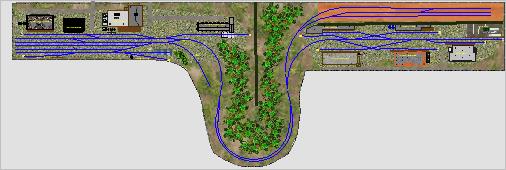 |
| 2 | CNR Port Dover | 40 x 61 | From the late 1890s until the late 1940s, Port Dover, Ontario was a thriving mixed agricultural area with a large fishery noted for its perch, smelt and cod from Lake Erie. The Newburgh Fishery was the town's largest employer and consisted of the large fish factory and related ice plant and cannery to assist in shipping their products throughout Ontario and into the US border states. Other local industries included a lumber supply firm, the Matthew Wells Pickle factory [seasonal business]and the Ivey Company, noted for its roses in particular and flowers in general [another seasonal business]. Local businesses in town shipped and received their goods either via the freight house, or for larger quantities via the Team Track. Passenger traffic even at this time, was sparse and CN serviced the area with mixed trains by adding a coach or two to a regularly scheduled freight run. | 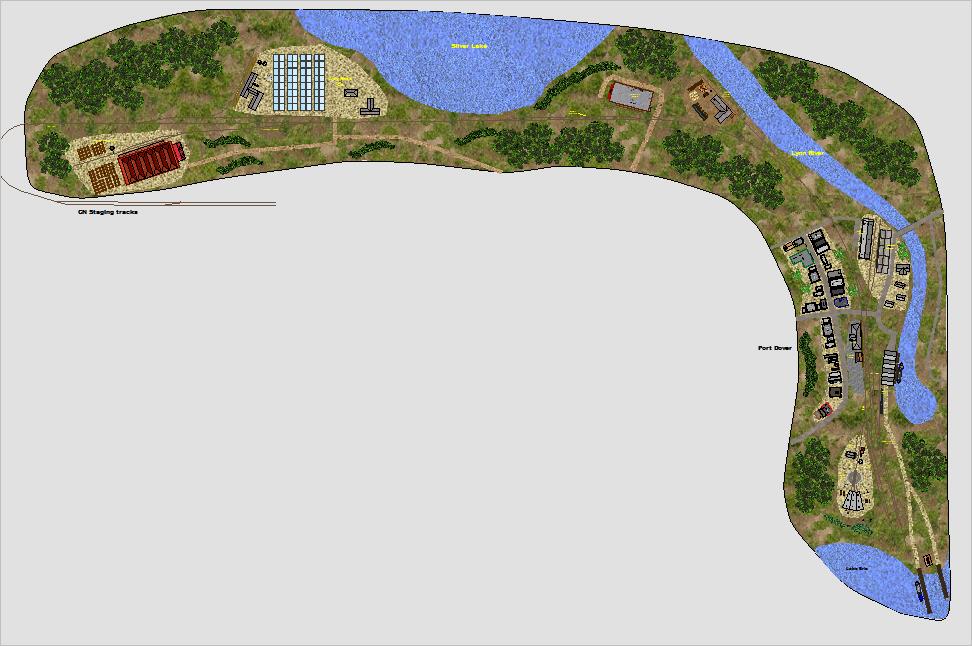 |
| 2 | Connaught | 10 x 17 | Connaught and nearby Royal are 2 mid-west cities with some interesting operations spread around several industries. This layout can be operated as a point-to-point plan OR you can view the yards in each city as staging points representing the wider marketplace. | 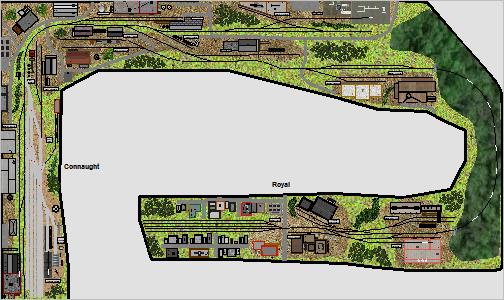 |
| 2 | Conrail's 5th Branch | 22 x 53 | This around-the-walls shelf layout represents a ficitonal portion of Conrail's network in the industrial north eastern US. Set in the modern era, there are several larger industries to service along with a good deal of bridge traffic moving between centres. The main yard is located in Braddock on the south of this plan. This yard would be primarily stocked with cars destined for the industries along the branch. The Daymon yard represents the northern transfer poin to the next division. | 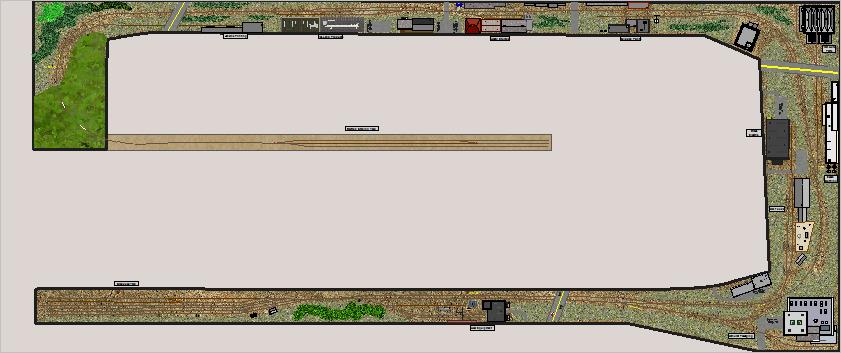 |
| 2 | CSX Mindheim Branch | 7 x 12 | This layout is basically a scenicked version of Lance Mindheim's "My Time" layout. Lance is a strong believer in the value of simplicity when it comes to model railroad design. Visit his website at www.shelflayouts.com. Your CSX switcher starts out in the Staging area and drags its cut of cars down to Mindheim Yard where goes to work blocking and classifying the cars. It then leaves the yard, switching industries up and down the branch until it reaches the peninsula. At that point the engine runs around the train and makes the return trip. Since runarounds are far apart, careful planning of your switching sequence is the key to success here. |
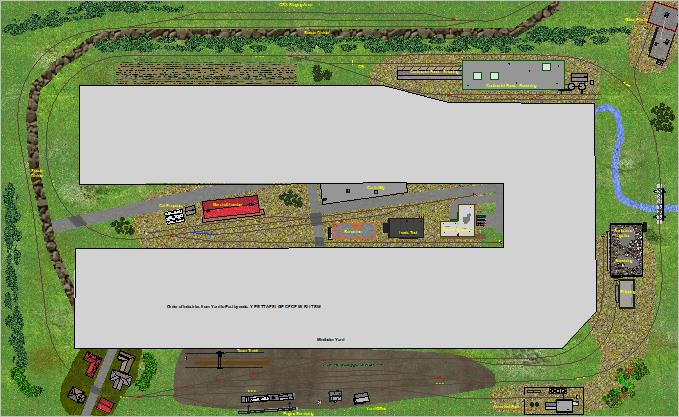 |
| 2 | Desmond | 4 x 16 | The town and yard at Desmond served a mixed industrial, agricultural and resources based branch line in the mid 1940s. The branch has 4 switching zones- (a) for the engine shed and freight house (b)for light industrial (c)mixed agriculatural and industrial sites and (d) a small coal mine. There is no passenger service in this area at this time. |  |
| 2 | Dilligence | 12 x 18 | I wouldn't be surprised if you have never heard of the Dilligence division of the British Columbia Railway. The branch serves the town of Dilligence which lies somewhere to the west of Quesnel and somehow never quite made it on to the maps of Cariboo country. The period is the early 1970's just after the BCR took over from the Pacific Great Eastern. If you are unfamiliar with the route you can start by running the two car Budd passenger set which operates from Dilligence to Quesnel on three days each week, and from Quesnel to Dilligence on the alternate days. Once the Budd has reached its destination you can assemble the Pedler at Quesnel Staging and operate this over the whole route turning at Dilligence and returning to Quesnel. |
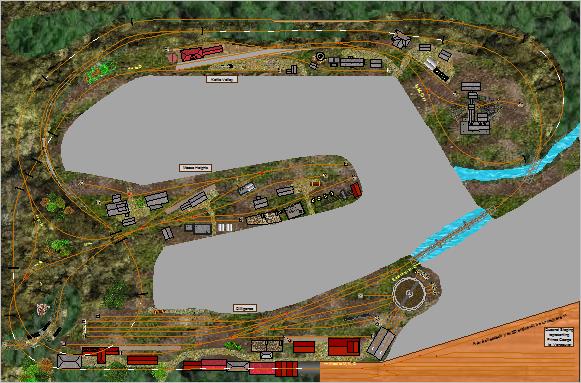 |
| 2 | District Blvd Vernon CA | 19 x 64 | This would be a room sized layout based on switching tasks which play out daily on the Los Angeles Junction [LAJ] which is a bridge short line RR linking the BNSF and the UP at Vernon CA. LAJ has two yards simply named A and B Yards. On the right side of this plan is a portion of B Yard which is where cars bound for local industries off District Blvd. are sorted and put into the correct blocks by the yard goats. |
 |
| 2 | Downtown Spur Miami | 23 x 29 | Lance Mindheim is owner of The Shelf Layouts Company, a custom model railroad building and design firm. He speaks nationally at a variety of prototype modeling conferences and is author of numerous articles for the model railroad press. An engineering graduate of Purdue University, he is a strong believer in the value of simplicity when it comes to model railroad design. Visit his website at www.shelflayouts.com. This point-to-point layout - the Downtown Spur, runs south from CSx's Hialeah Yard to service several produce centres as well as some other small to medium industries in the area. There are lots of facing point and trailing point moves to consider and just 2 runaround tracks. Plan ahead!! |
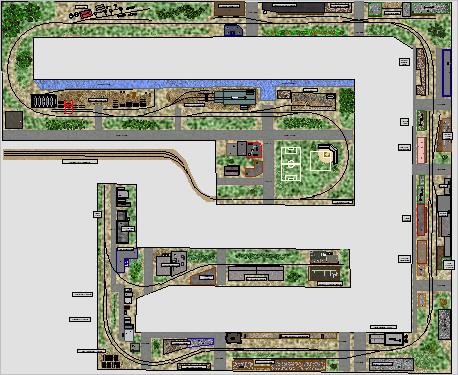 |
| 2 | Elkhart | 25 x 27 | This room sized layout is based on a fictional town set in the 1930s in north eastern Maine which is served by a 2 foot narrow gauge railway linking it to the towns of Howland and Lincoln where there is an interchange with the BSR railway. Elkhart is a mid-sized town with several local industries to serve. There is a mixed train for some passenger and parcel services as well as a pedlar train for special runs for the large lumber mill and stock yard and the merchants in Elkhart. |
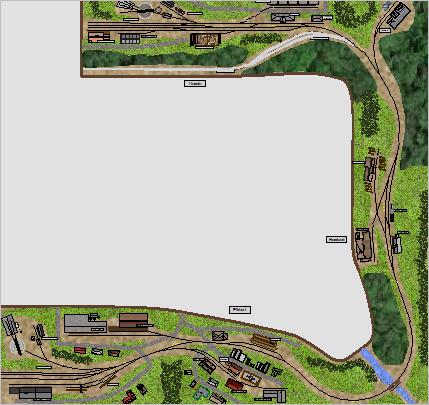 |
| 2 | Elmhurst RR | 18 x 24 | The Elmhurst Railway is a narrow gauge line which services a lumber camp and a gold mine along its rugged main line. This multi-deck plan has the natural resources located on the northern portion of this plan and the inital processors of these products are situated on the lower level. Due to rugged conditions, trains are generally short. The railway also provides mixed service using a combine to provide passenger and parcel service. | 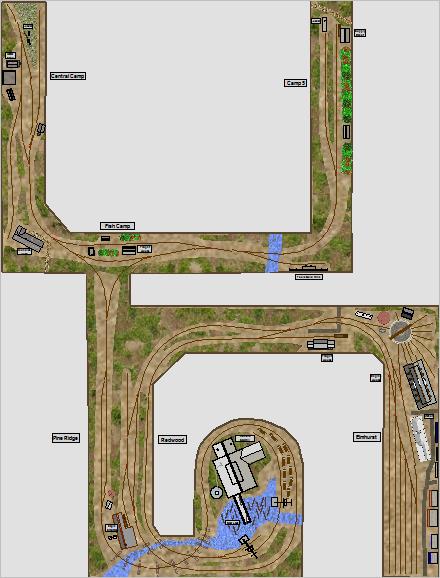 |
| 2 | ffarquhar | 7 x 11 | Ffarquhar was the home layout of the Rev W Awdry, author of the 'Thomas the Tank Engine' series of children's books. Ffarquhar station was a removeable section which regularly toured the exhibition circuit and is currently preserved at the Narrow Gauge Railway Museum at Wharf Station on the Talyllyn Railway in Wales. To adapt the layout for TrainPlayer we have taken some liberties with the fiddle yards but the main scenic section attempts to replicate the original track arrangement. Thomas's branch line runs from Knapford to Farquhar via Elsbridge. All trains run chimney first towards Ffarquhar and bunker first when returning to Knapford. You start your day in the Fiddle Yard at Knapford Junction and are responsible for all traffic on the branch. All cars displaying labels should be pulled and spotted on the tracks with the corresponding labels. |
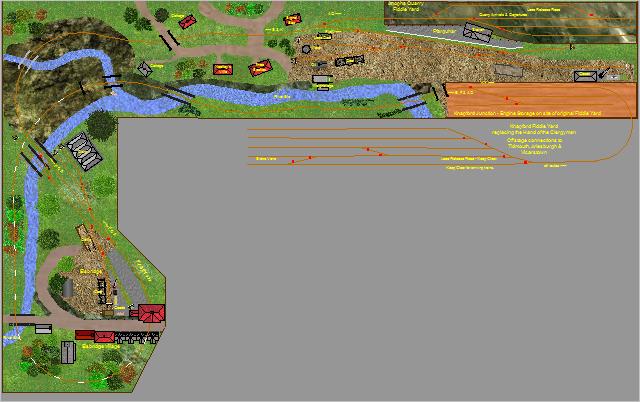 |
| 2 | Foxfield Green | 15 x 16 | Foxfield Green is a fictional branch off of British Railways. It represents a mid-sized town in south east England with a number of small and medium light industries which are still being served by rail in the late 1940s era. You can choose to run whichever shunter you wish. Your switch list assignment may require you to travel the entire layout to complete your task. |
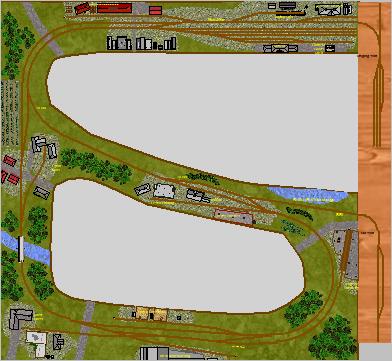 |
| 2 | D&H Garland Branch | 15 x 21 | Garland Branch is a fictional midpoint town on the D&H Railroad's Seneca Division. As such, it has only a very small yard area which also doubles as a team track spot. Garland receives/send cars both south [New York] and north to Schenectady. In the late steam era depicted here, on-line industries are small light factories, warehouses and depots. To familiarize yourself with this branch, we recommend that you run the Flyer passenger train first on its "out and back" trip. |
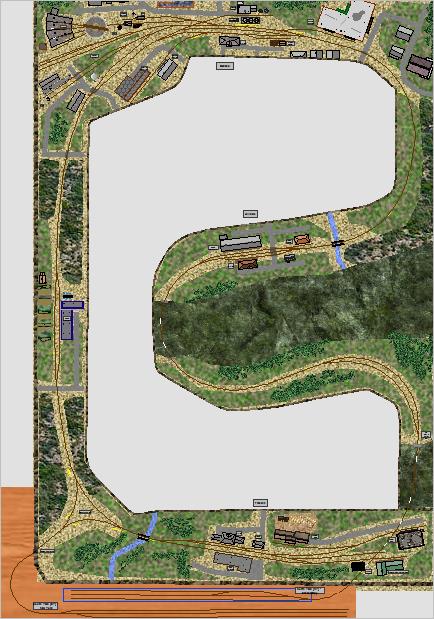 |
| 2 | Georgia Northeastern | 20 x 26 | The Georgia Northeastern Railroad is a short line freight railroad which runs from the town of Elizabeth, Georgia (now within Marietta) to the city of Blue Ridge, Georgia. Goods hauled are mostly timber, grain, poultry, and marble products. The main headquarters for the GNRR is in Marietta and its main Elizabeth Yard. The track work for this layout is from a Tom Klimoski plan of the same name. |
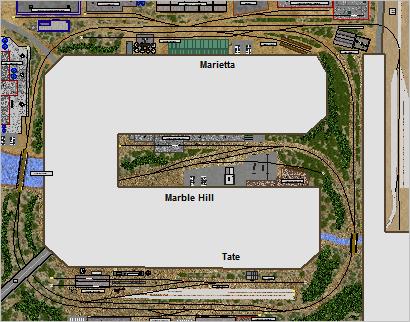 |
| 2 | Gobblers Knob | 13 x 25 | Gobblers Knob is a fictitious subdivision of the 2ft Gauge SR&RL Railroad extending north from Bigelow to service the sawmill complex at Gobblers Knob and to connect the railroad to the slate quarrying industries in the northern mountainous region of Maine. Outgoing traffic is comprised mainly of pulpwood and slate, and the Ahern Slate Quarry requires copious amounts of sea sand to be brought in for slate polishing. Your engine has been prepared by the hostler at the Bigelow North engine shed and you should start by heading south into the Bigelow yard to assemble your northbound train. All townships will be visited in numerical order and you should block your train accordingly before heading out. There is only one scheduled train each day which runs as a mixed train turning at Naylor. You must stop at all passenger stations in accordance with the sequence shown on the top of the combine. You are free to run any extra trains that you deem necessary to complete your switchlist. |
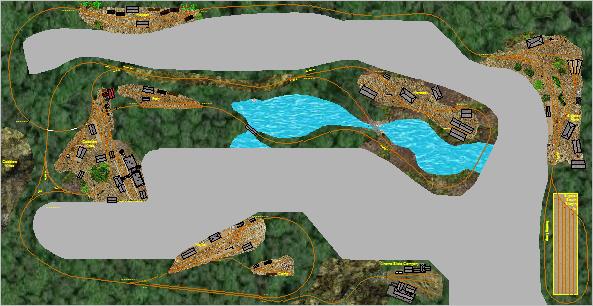 |
| 2 | Greenwood | 11 x 16 | Greenwood is an important sub on the Erie RR which has a interchange with the nearby PRR and several important local customers. AAA Cattle sends 4 loads daily to market via the PRR. The Ice House supplies the ice blocks for the reefers bound for the Meadow Dairy. This dairy ships milk and dairy products to market daily via the Erie and receives a couple of cars daily as well. Garner Lumber serves a growing local market and can receive 3 or 4 loads daily in season. Ideal Hardware primarily receives and stores products bound for local businesses by truck. The largest customers in town are Madison Mill which receives 4 - 6 loads of raw materials daily and ships 4 - 5 loads of finished goods daily as well; and Lawson Foundry which receives coal and ships steel plates and rails. | 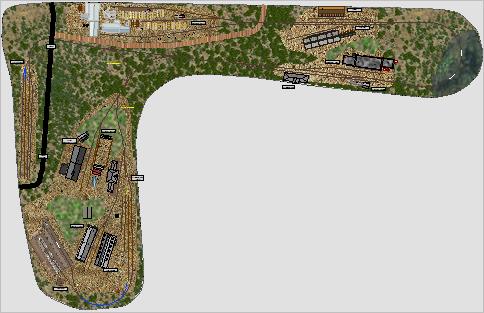 |
| 2 | Hampstead | 9 x 9 | Hampstead is a point to point room sized layout with a small yard and a separate staging yard. There are 2 large industries in the community - Arco Machinery, Fortin Papers and Napa Parts, as well as several other small to medium sized businesses. There is also a short out-and-back passenger run using a Doodlebug. | 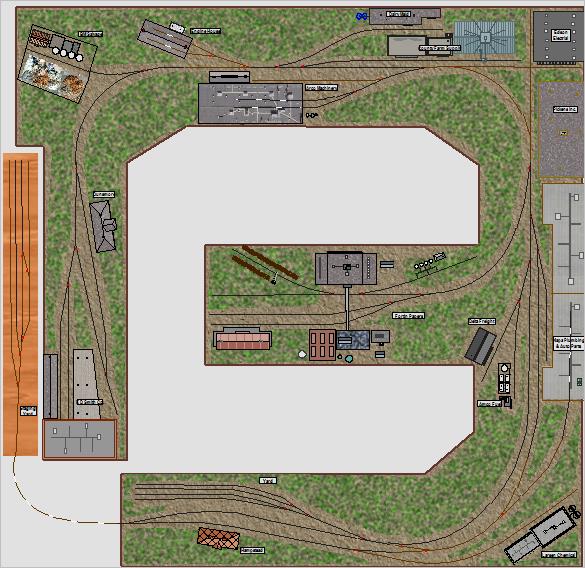 |
| 2 | Huron Terminal | 18 x 23 | Based on the room sized plan of the same name from the October 2010 Model Railroader magazine, this plan focuses on a short line railroad which handles the transport needs of a small mid-west city in the early diesel transition period. In addition to several small to mid-sized industries, the railroad has an interchange with the GTW which is its link to outside markets and its main source of incoming traffic. | 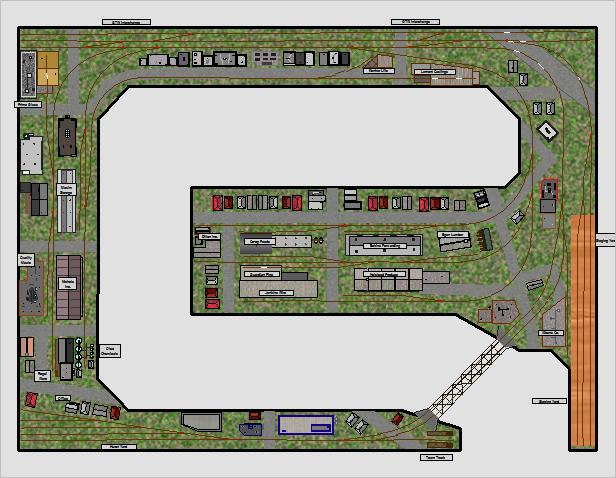 |
| 2 | Klose Korners | 6 x 9 | Klose Korners is a whimsical corner layout plan, depicting the end of a subdivision. A lonely SW1 switcher handles the meagre switching duties in this late 1950s era town. | 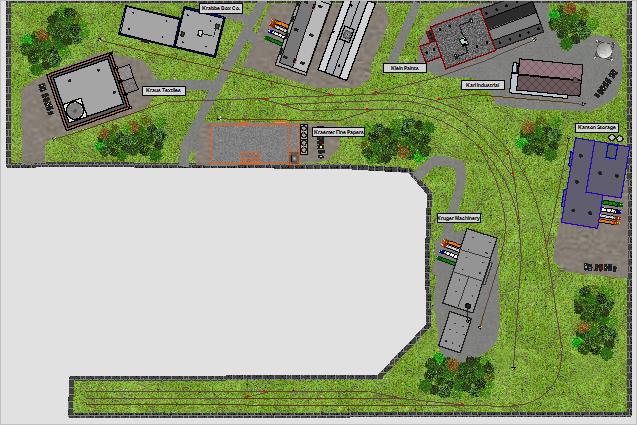 |
| 2 | Lakeside | 20 x 23 | Lakeside is a medium sized port in the US southeast. It is focused on the local fisheries and fruit and produce growers. There is a mid-sized ADM grain mill to service along with a fairly busy Interchange with the FEC. You have control of a couple of switch engines to handle the freight traffic. There are some generous runarounds to ease your burden. | 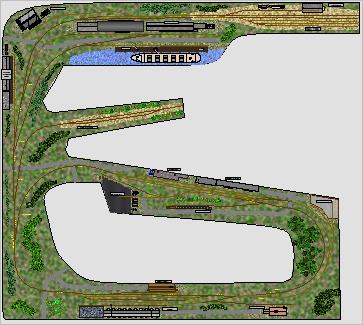 |
| 2 | Loganville | 15 x 16 | This room sized layout focuses on the industrial town of Loganville which is dominated by the large and active Patriot Paper mill. The Delta shortline which services this area has a modest yard with an interchange with the Norfolk Southern. Delta RR also has a few other medium sized customers - like Forte Cement and PenTex Fabrics. The time period is early modern era. | 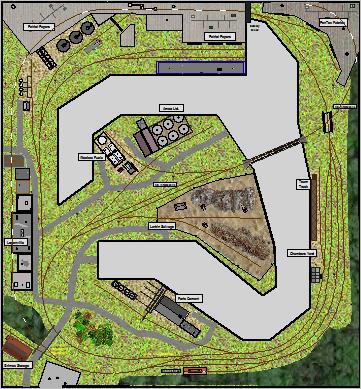 |
| 2 | Marsville | 16 x 18 | Marsville represents a small industrial area near Vernon CA in the modern era. to the south is the main Marsville Yard where traffic will enter and exit from this zone. There is also a small yard to the north end for car cleanout and inspection before re-assignment. The light and medium industries are typical of the ones found in this vicinity. | 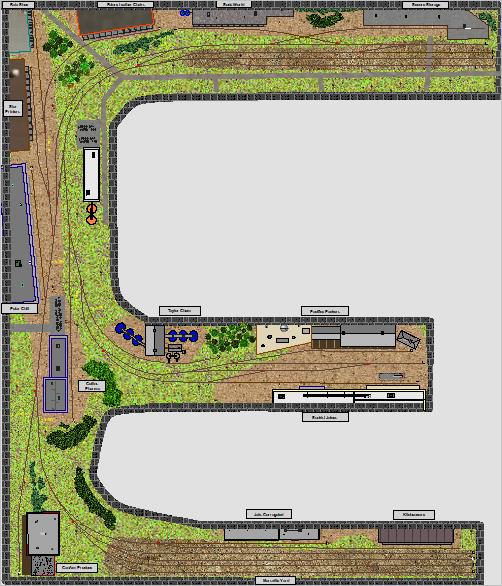 |
| 2 | Midthorpe Branch | 13 x 18 | Midthorpe is based on a Trainplayer layout originally designed by B Pigozzo in July 2013, modified for YardMaster in August 2016. Your day starts in the staging yard which represents the junction with the mainline. You are responsible for all traffic movement on this Branch Line. |
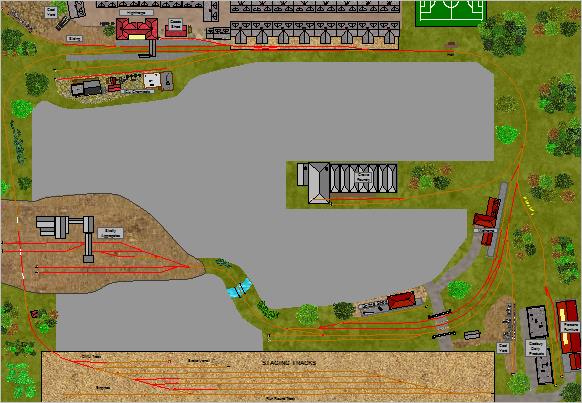 |
| 2 | Muncaster Terminal Railroad | 5 x 19 | This "around the walls" shelf layout was designed with point-to-point operations in mind. There is a staging yard at one end and a classification yard at the other. In between there is a distribution centre,the largest industry on the layout, a Team Track with crane and ramp for unloading, a textile mill, a scrap yard, a Soda pop bottling company, a lumber supply and a bakery. There will be enough rail traffic to keep you busy and interested. Enjoy! |  |
| 2 | Orchard Park Zone | 15 x 16 | Orchard Park is a small industrial zone on the Penn Central RR,near Buffalo NY set in the late 1930s. It is serviced via Orchard Park Yard and has a nearby, off plan interchange with the New York Central. | 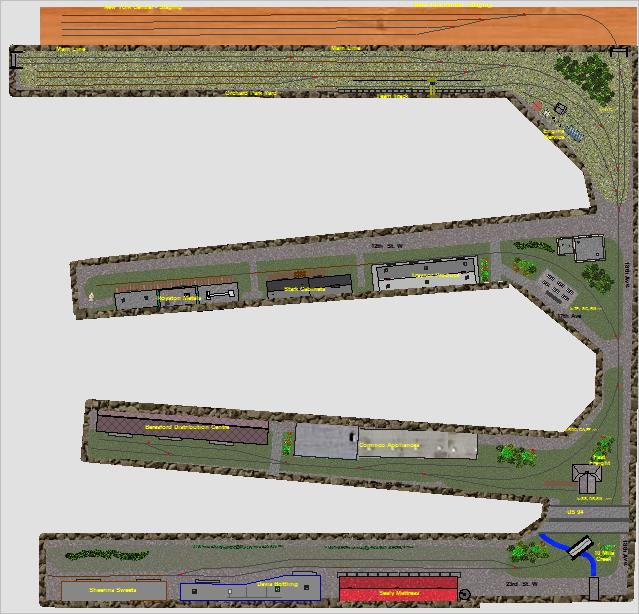 |
| 2 | Packers Bay | 5 x 25 | This room sized plan tries to incorporate some of the modern traffic that would be typical of a mid-sized port city in the central USA called Packers Bay. There is some bridge traffic flowing through the Minneapolis to Chicago, and Packers Bay receives a large block of cars bound for local customers. As well there is a modest cement plant, a busy grain mill and a large paper mill all of which will send and receive several car loads daily. There is a small classification yard called "B Yard" in the west of the city where you can sort your trains and temporarily store some cars while they are in transit. |
 |
| 2 | Palace Rd. Wharf | 13 x 18 | This layout is inspired by Andy Sperandeo's First and Alice Street Yard in Model Railroad Planning 2014. The setting is the mid 1950s when the Alice Street Yard was a self-contained industrial yard of the Santa Fe, serviced only by ferry barge, that served a handful of clients in Oakland, California. We have changed that concept by 'obtaining track rights' from the SP to share a small yard some distance from Alice St. In this version, the ATSF found a couple more on-line customers, the car ferry is down to only 2 tracks and the Sunset Lumber Mill is gone too, replaced by a ferry storage track. |
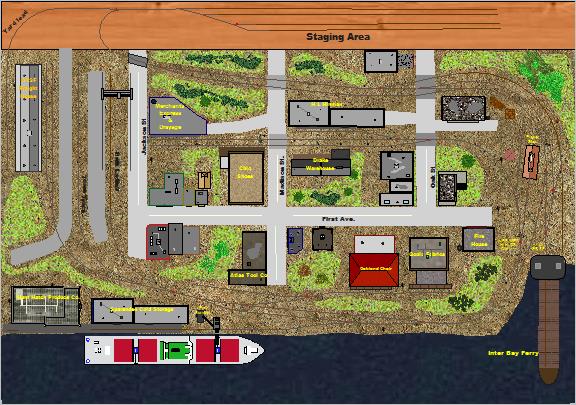 |
| 2 | Penwirth Branch | 16 x 31 | The Penwirth Branch is an around-the-walls with a peninsula layout plan depicting a fictional GWR branch line during the early 1920s. There is a coal mine and some other industries in the countryside which are still rail served and some smaller merchants in the two principal towns - Allynford and Penwirth. There is also a daily passenger service which stops at both towns before returning to the Staging area. | 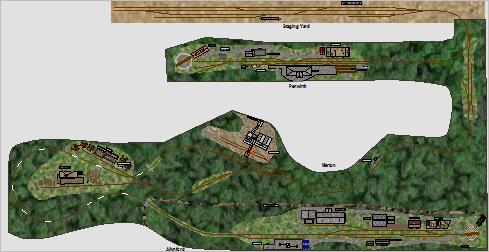 |
| 2 | Peterboro sub | 19 x 44 | This shelf layout is based on Trevor Marshall's Free-Mo modules of the same name. In our version, we have added a Staging yard which will be the source and destination for all traffic on this layout. There is a good range of local industries represented on the plan and some interesting switching challenges to test your skills. | 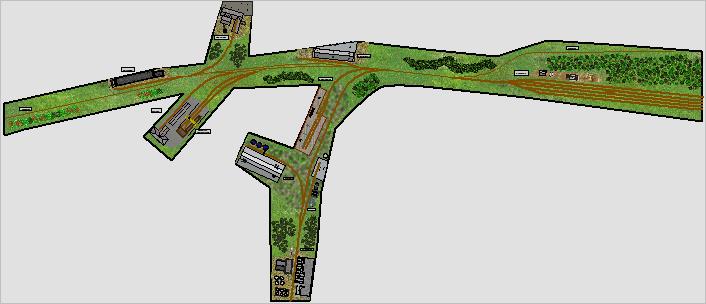 |
| 2 | Port Byron | 11 x 18 | This layout grew out of a Byron Henderson design - 6th Street Job, San Jose CA which is included in our Featured Layouts\Byron Henderson Designs folder. One of the largest customers on this railraod is National Gypsum which proto-typically world would receive / ship about 50+ loads a day. For this model, that is scaled down to about 10 daily loads.The local industries all generate a few loads per day. The other large customers are served at the Team track and LCL load area and the Atlantic Trading Co. which receives a wide variety of loads bound for overseas shipment. |
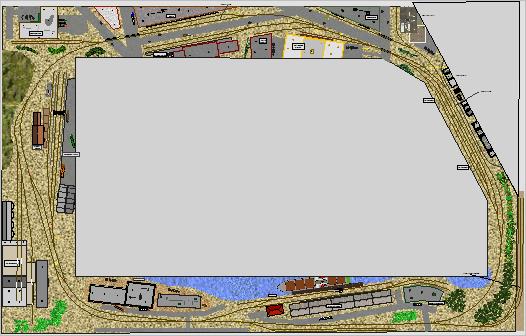 |
| 2 | Royalton Branch | 8 x 17 | Set in the early 1930s, the Royalton Branch was a busy small town in the eastern US with an active coal mine and a few small local industries. Since it was located in the foothills close to the coal mine, the B&O provided both freight and passenger services to the town until the late 1940s when the branch was closed. | 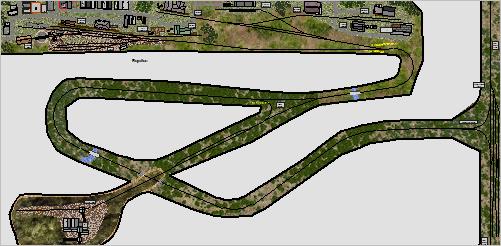 |
| 2 | San Jacinto District | 6 x 9 | San Jacinto District is a 6ft x 9ft switching layout designed by Andy Sperandeo of Model Railroader to fit into a spare bedroom. The San Jacinto District is located in the Garden belt of California and so features 3 packing plants, an ice house and a cattle export site. Trains are generally very short - no more than 8 cars with engine and tender. | 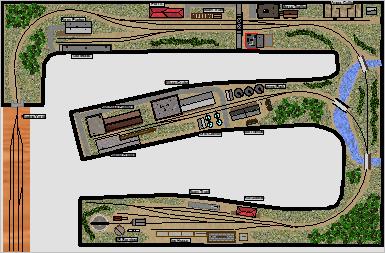 |
| 2 | Sebring Branch | 17 x 21 | This eastern US short line layout depicts an entire branch line by folding track back on itself in an "out and back" mode. The main Sebring Yard is located on the bottom left side of the plan. Trains leaving the yard quickly disappear into a tunnel and emerge out on the branch to do their work. | 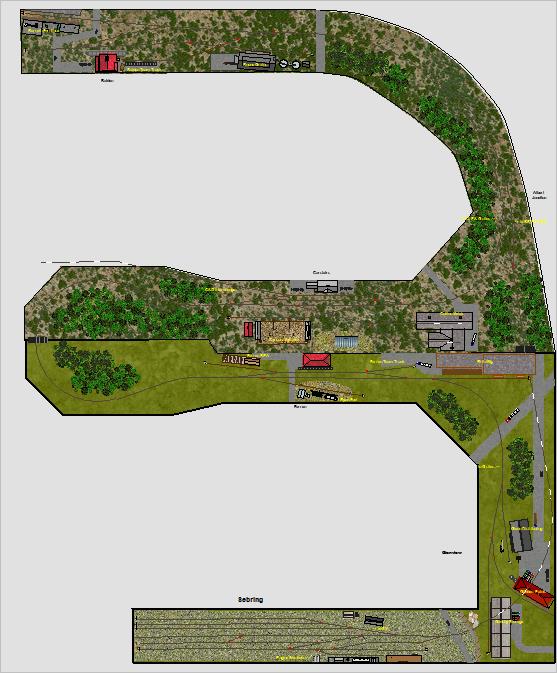 |
| 2 | Stillwater Sub | 20 x 40 | This point to point layout is a fictional depiction of a branch of the CBQ going west to Minnesota in the steam-to-diesel transition era of the 1950s. The line starts at the Stillwater Yard and winds its way through the countryside and services several medium light and heavy industries along the way, before reaching Parkdale. There is an interchange with the CNW where cars are exchanged 3 days per week. | 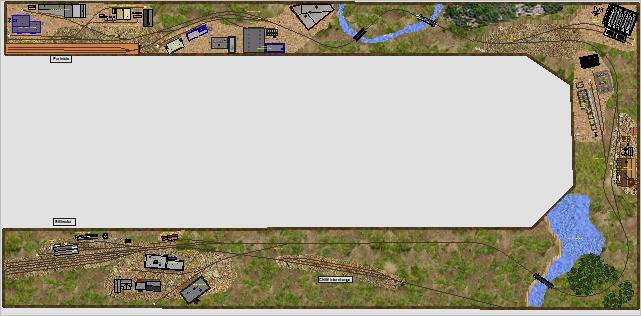 |
| 2 | Store Street - Victoria BC | 20 x 41 | This shelf layout represents a portion on Store Street's industrial zone in Victoria British Columbia in the early diesel period. This busy industrial area is served by a long CP spur with no run-around track. You MUST use the yard to set up your train in the correct switching order and your shunting moves need to be carefully worked out in advance. |
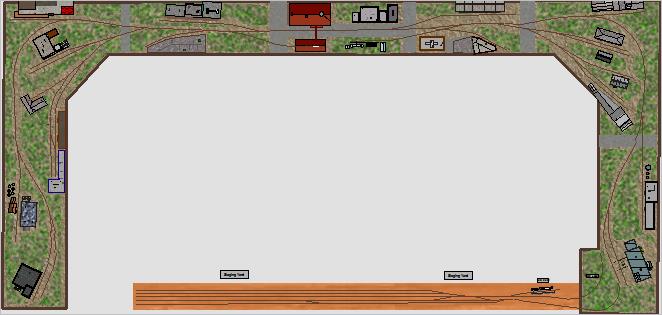 |
| 2 | Sumner Division | 28 x 66 | Sumner Division is a fictional part of the Kansas Dakota Railway [KDR]. Its largest customers are the United Co-op and Victory Coal which generate many car loads daily. As well, there are over 20 other light and medium industries which require rail services. Also, there IS an interchange with the CNW about the mid-point of the division. | 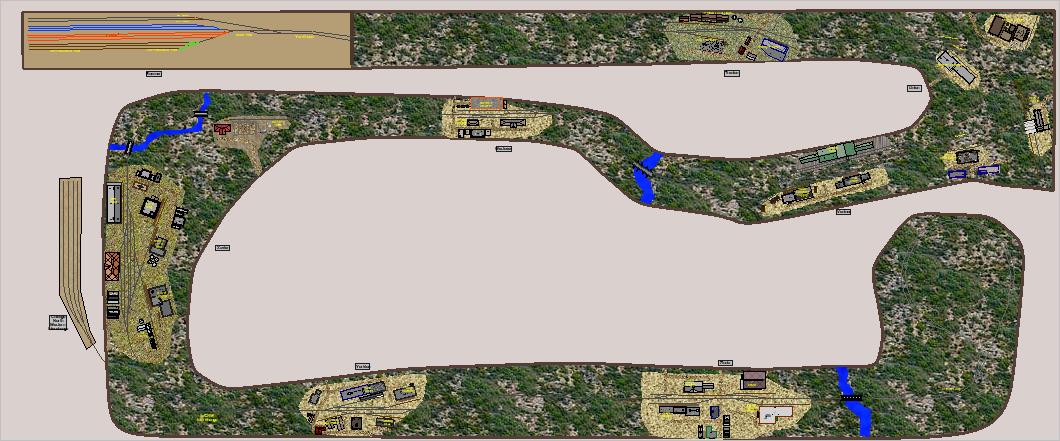 |
| 2 | THB Dundas Branch | 18 x 23 | THB Dundas Branch is a fictional representation of the Toronto Hamilton Buffalo RR track work through the countryside around Hamilton. Several of their main customers are depicted on this late 1940s era layout. Your switcher will have to make up its train from cars waiting in the main yard and then deliver them to the THB's on line customers, while at the same time, retrieving cars which need to be either cleaned or forwarded to other destinations. | 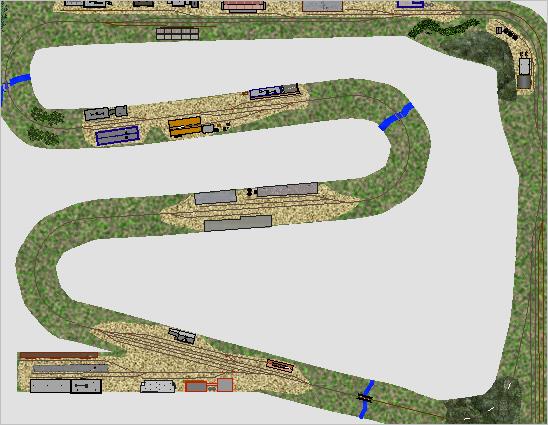 |
| 2 | Tic Toc Dock_Ry | 16 x 22 | Tic Toc Dock & Railway is a small railway which serves a small, remote seaport. It receives most of its cars from either the daily car ferry based in Toc or, via its main line connection not far from Tic. The TTDR services several local customers with its 3 small diesel engines. One or two diesels may be involved in servicing the car ferry; while the third often is found at Tic, sorting the small yard there and moving cars out via the main line connection to the north. | 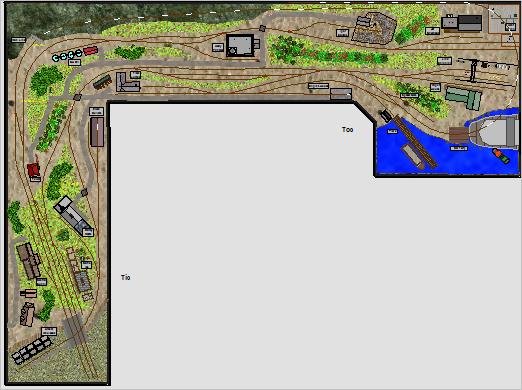 |
| 2 | Unionville | 10 x 12 | Unionville, as its name implies, sits astride a major interchange with the NYC lines. As a junction point, it receives a good amount of traffic and will forward many cars on their journey via this same manner. The small city of Unionville has one large grain mill and an assortment of light manufacturing businesses within its city limits. | 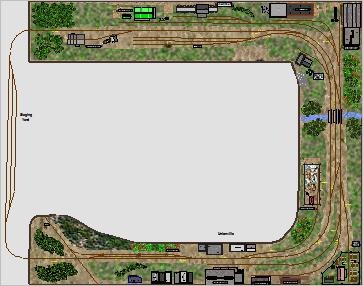 |
| 2 | vernon ave - vernon ca | 9 x 37 | This would be a room sized layout based on switching tasks which play out daily on the Los Angeles Junction [LAJ] which is a bridge short line RR linking the BNSF and the UP at Vernon CA. LAJ has two yards simply named A and B Yards. On the right side of this plan is a portion of A Yard which is where cars bound for local industries off Vernon Ave. are sorted and put into the correct blocks by the yard goats. This is a tough simulation to master but the crews on the LAA deal with it every day! |
 |
| 2 | vista verde | 14 x 15 | This room sized layout with a peninsula is based on Lance Mindheim's Waterfront plan. The layout features several typical dockside and nearby light industries. New cars ordered enter the scene from either the staging yard to the north or via the interchange yard to the south. | 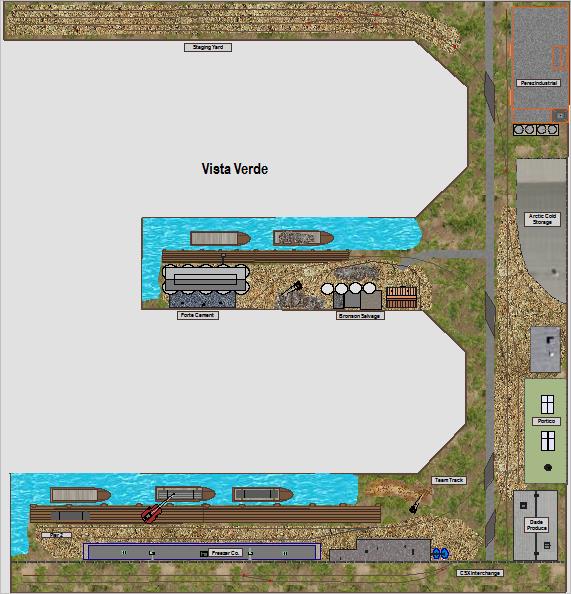 |
| 2 | Waite Business Park | 22 x 26 | Waite Business Park represents a modern commercial, industrial estate setting in the US north east with a transload centre and several medium sized rail-served industries. While on the plan, the Carson Yard and the PC interchange look to be very close, they are actually miles away. But to achieve some realistic operations activities we have compressed the scene accordingly. | 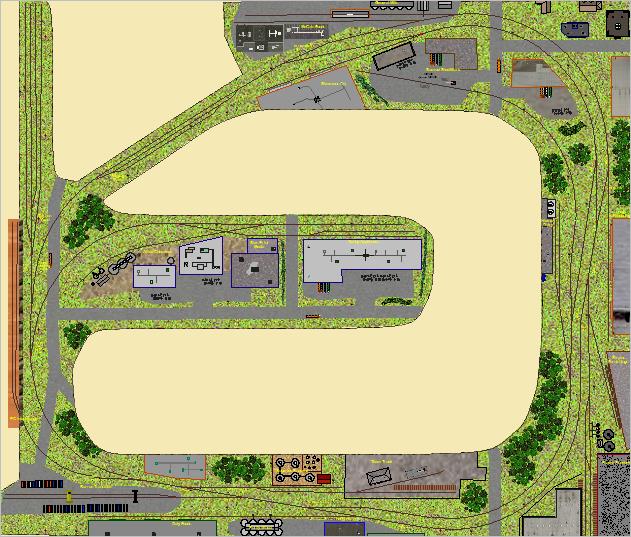 |
| 2 | Waverley Industrial Zone | 20 x 23 | This room sized layout is inspired by the designs of Lance Mindheim [http://lancemindheim.com/]and his interest in switching operations around modern day Miami, FL. Lance always includes plenty of "local color" and prototypical switching moves in his plans. We hope we have achieved those goals with Waverley Yard. Enjoy! |
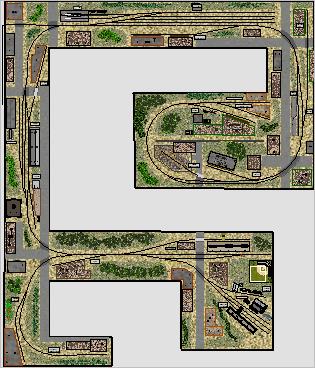 |
| 2 | West Quay | 12 x 34 | West Quay is a fictional port town in the west of England in the early 20th century era. It is a port access for the larger town of Fenstral. West Quay's industries mainly serve the fishing community with a fish factory and also in hauling fish products to markets in the larger cities. There are some small service industries for moving cattle, coal and general goods to market. Fenstral also serves the general needs of the surrounding community which is dependent upon transport of coal, cattle, general goods and dairy products. There is also a local country passenger / parcel service into town. Just west of Fenstral is Claymore Works which a major employer in this area as it produces a vast amount of clay pots, clay tiles and bricks. |
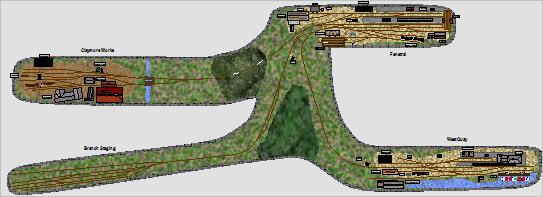 |
| 2 | Westvale Yorkton branch | 9 x 10 | The Westvale - Yorkton branch is based in the US north east in the 1920s era. It is a 3 foot narrow gauge line. The two towns on the branch generate a decent amount of traffic and together with the volume from the Ore mine, there is enough revenue generated to keep the rails in good repair and shiny. There is limited passenger traffic on the branch in this time frame and usually a coach / combine is added to a mixed train to handle this demand. | 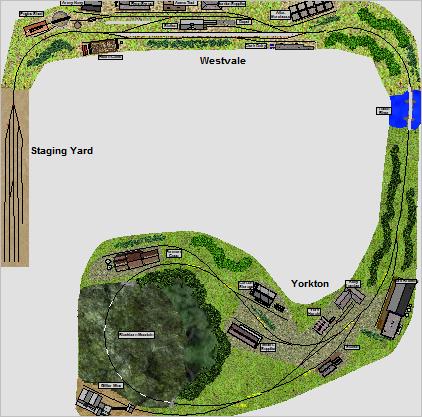 |
| 2 | Woody Glen | 6 x 62 | This is a fictional layout in north eastern Maine and, as its name implies, the main industry is a pulp and paper mill. The wye junction splits Woody Glen into 2 sides - the factories to the east and the paper mill to the west. There are 2 switch back tracks which may cause some grief, but using either the yard hog or the town switcher, you will service all industries in Woody Glen per your switch list.. |  |
| 3 | Avast Line | 22 x 28 | This narrow gauge layout is based a timber and mining line in the western Colorado mountains. Steep grades abound and the result is shorter trains or a larger one with helper service. There is a mixed train run which stops at every station along the route. The main yard is located in Antigo and there is a western terminus beyond Glenburnie. Finally there is also a short interchange with the GWR at Avast. | 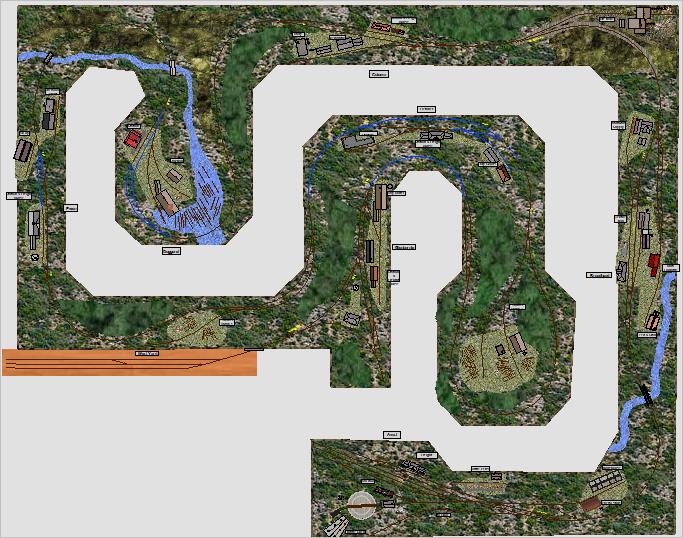 |
| 3 | BCR Dawson Creek | 39 x 109 | Timothy Horton's BCR Dawson Creek layout is the direct inspiration behind this plan. Tim's layout was featured in Model Railroader and you can read all the details of Tim's layout on his web site here: http://www.bcrdawsonsub.ca/. While Tim's layout is a 2 deck, around the walls plan, we have put all of his sub onto one level and have added a couple of mines where his helix would have been located. As Tim noted 'The 61 mile Dawson Creek Subdivision was a perfect fit. In 1977 trains were anywhere from 5-25 cars in length and required 1-3 locomotives. The typical consist was a microcosm of the mainline trains: trailers, lumber, wood chips, ore and grain. The yards at Chetwynd and Dawson Creek were reasonably compact and could be modelled with limited compression, and there was significant scenic interest along the line. |
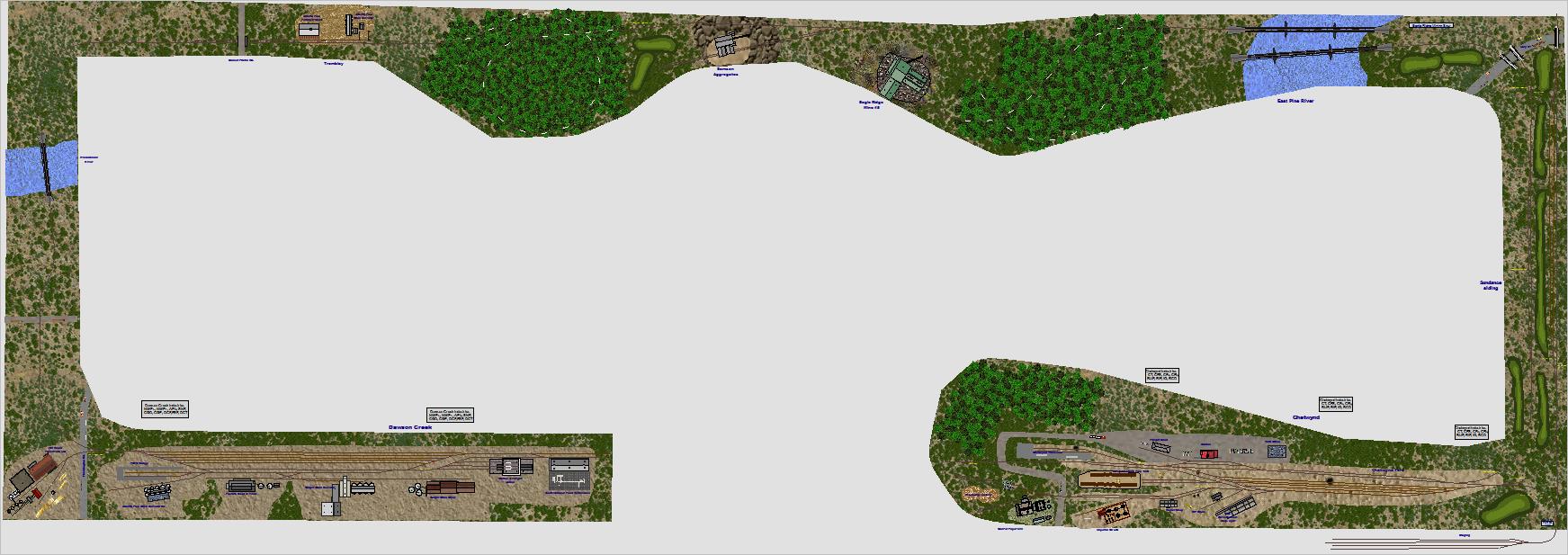 |
| 3 | Bendix Steel | 12 x 44 | Bendix Steel is a typical blast furnace operation complete with a rolling mill. It consumes a huge amount of coal, coke, limstone,ore and other raw materials and produces copious amounts of steel plates, ingots and slabs, as well as tons of useless slag during processing. As well there is a need for loads of bricks to rebuild / re-line furnaces, sand,lubricants, replacement parts and equipment. A plant this size has 3 of its own SW1500 switchers to move various raw materials around the site 24 hours a day. A nearby Class 1 will bring to the Staging Yard, dozens of loads of coal and ore to feed the furnaces as well as the other "incidentals" the mill requires for optimum performance. Two of the SW1500s are paired and work in combination or in "push / pull" mode separately. The thrid unit is the "Scooter" whihc does most of the Blast Furnace work and needs the 2 spacer cars to shield its engineers from the high heat of the molten steel loads. Once you've started the simulation, press F1 again for the full instructions on sequence of events to keep the mill operating at peak performance. |
 |
| 3 | Bowden Turn | 20 x 42 | The fictional Fox River - Bowden Turn starts at a smaller division point yard where trains are built and sent north and southbound. Bowden is at the far east of the division. From its small facilities, it send out a daily tramp to stop at the various towns and terminates at Fox River where it "turns" nad heads for home again. | 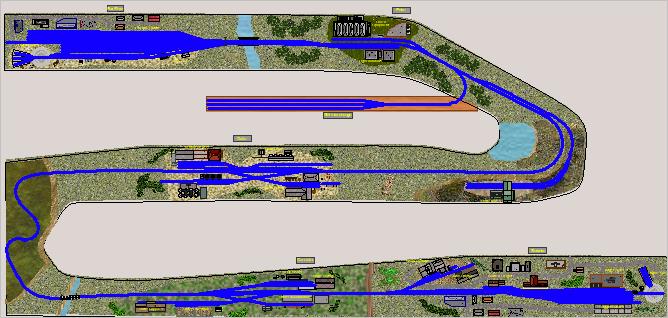 |
| 3 | Broad Top | 11 x 22 | Broad Top is a point-to-point plan with a yard at either end. At its south end, there is also an Interchange with the D&H. Along its district route, there are 6 switching zones with a mix of industry types typical of the north east of the US in the modern era. | 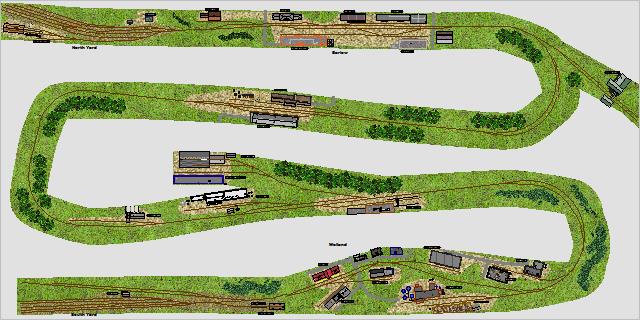 |
| 3 | Brookline | 39 x 79 | This club sized layout is based on a fictional city in the US north east in the late 1950s. There are several large heavy industries as well as assorted small industries located in this area. There is decent sized Staging Yard at the bottom of this plan and a large Interchange/Staging yard on the left hand side as well. This will ensure a good flow of cars for your industries and lots of variety for your switch chores. | 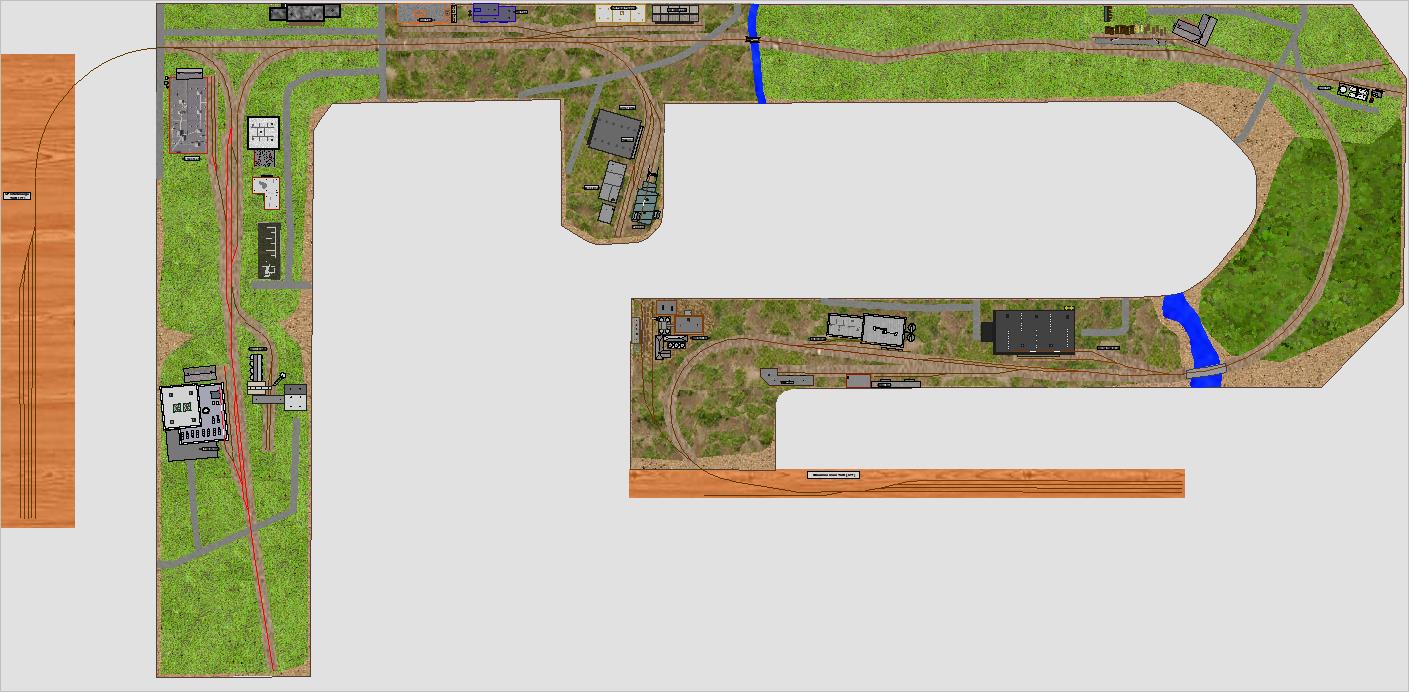 |
| 3 | Clearwater Sub CSX | 24 x 28 | This large layout, set in the modern era, is inspired by Lance Mindheim's various layouts based along the Florida east coast line around Miami and Fort Lauderdale. Many of the industries revolve around the mainstays of the local economy - fresh fruits and vegetables, with a sprinkling of light manufacturing and service industries. | 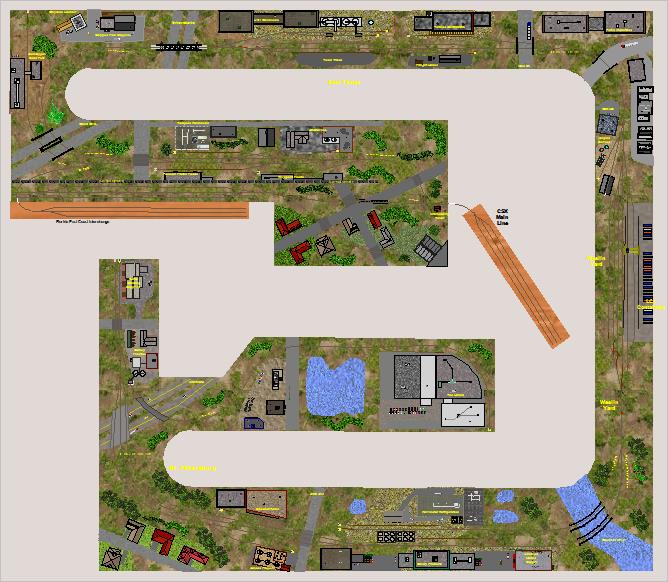 |
| 3 | Crossing the BAR | 35 x 36 | The Bangor Aroostock Railway [BAR] served as a bridge route between Canadian railways and their US counterparts in Maine. The BAR was also noted for hauling potatoes to markets in Boston and New York in insulated boxcars from 1895 to the late 1950s. Throughout its history, the BAR also did a lot of business with several sawmills and pulp and paper plants which dotted its operating area. For freight OPS, the St. Regis Mill is one of the BAR's largest customers and it generates incoming chemical and log loads and outbound loads of woodchips and paper products. A switcher out of the Searsport yard services this mill with cars from staging. There is also a daily BAR tramp freight which provides service to industries in Caribou and Presqu'ile as well as Dawkins and the MEC Interchange in the south. You will likely need to perform both of these roles to complete your switch task. |
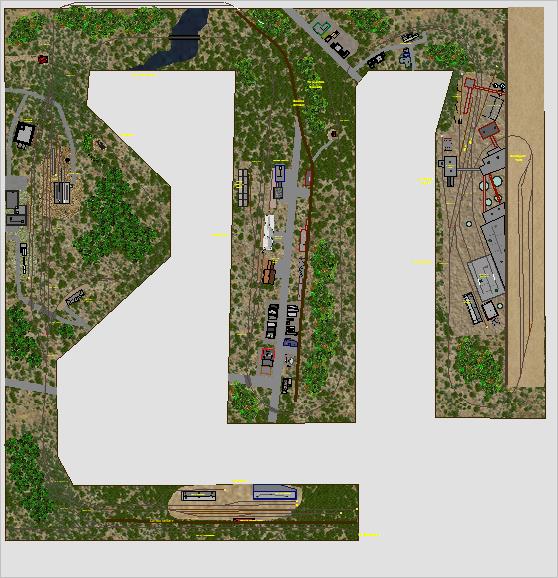 |
| 3 | Exeter, Foxwood & Grantly Railroad | 43 x 73 | Exeter,Foxwood & Grantly Railroad is based on a large FREMO display layout. It is a point-to-point plan with 3 good sized yards and an interchange with the mighty PRR. The EF&G RR provides both freight and passengers services over a largely single track mainline. Local industries include typical lumber, grain, feed mills and a small coal mine. There is also a fair amount of bridge traffic running over its line to reach the PRR interchange near Grantly. |
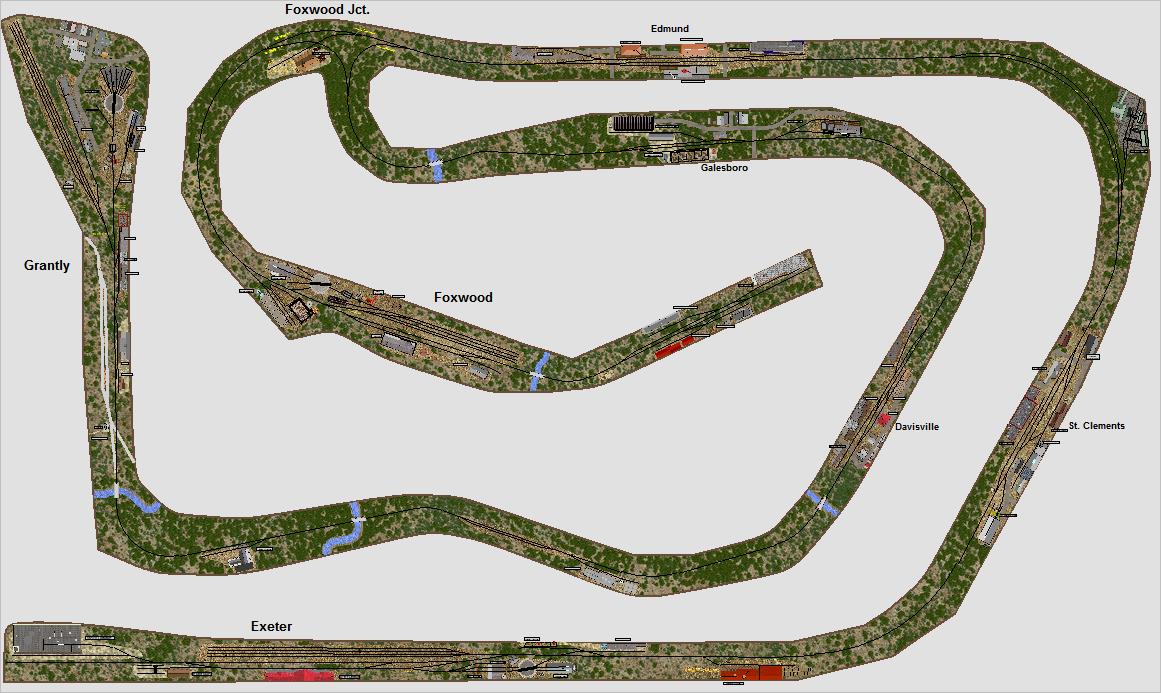 |
| 3 | Everman Sub | 32 x 78 | Everman Texas is a suburb of Fort Worth. There are several large industrial estates spread throughout the area and Everton is home to some good sized businesses with lots of rail traffic. The major customer in this particular development is Miller Coors LLC, the brewers who receive/ship 40+ cars per day. All operations start at the Staging yard located on the south east side of this plan. Set your zoom level to 1:4 for best viewing and operating. |
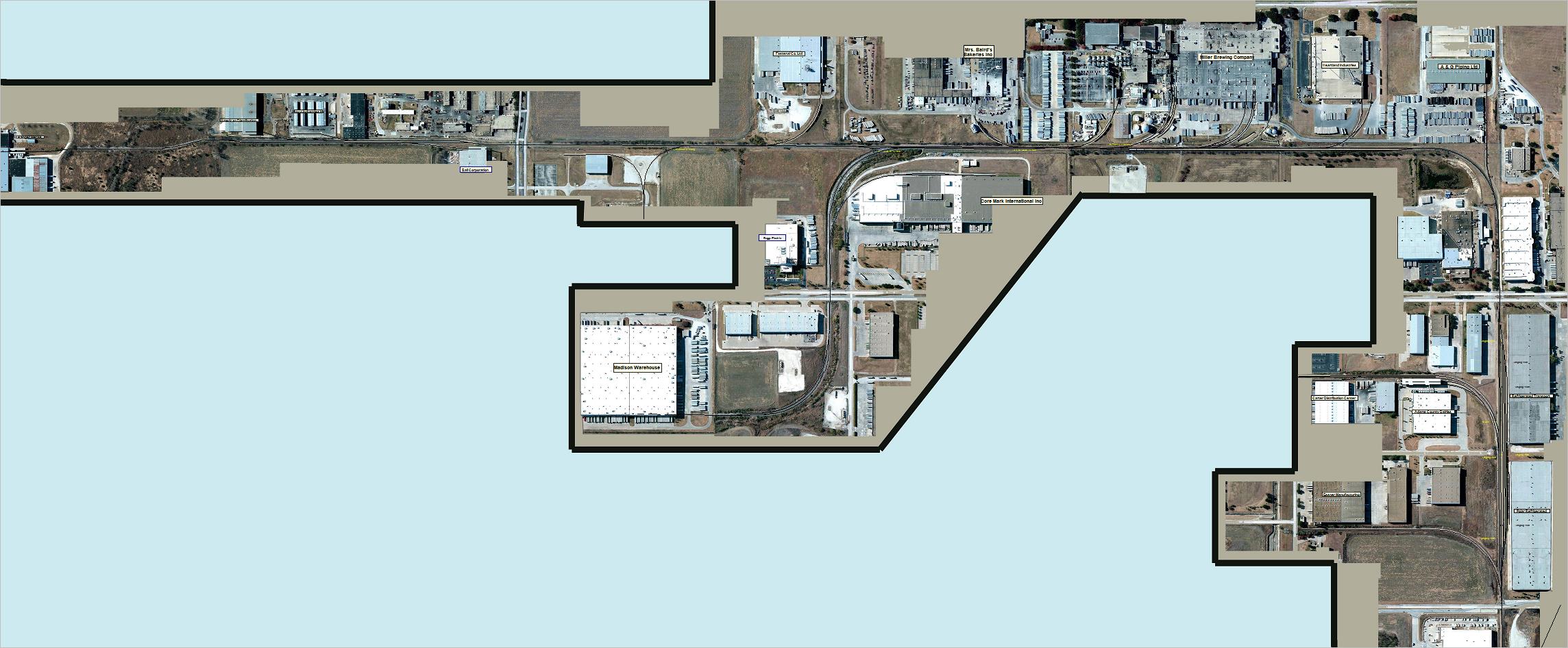 |
| 3 | Fremont Branch | 19 x 47 | This plan was based on a FREMO modular show display layout. It is set in the modern era, with plenty of switching moves for you to do and some long runs to view your long trains. Many of the industries revolve around the interchange traffic with the CNJ and the GM Engine plant in the south and the Ameri-Steel rolling mill near Fremont, with a sprinkling of light manufacturing and service industries throughout. | 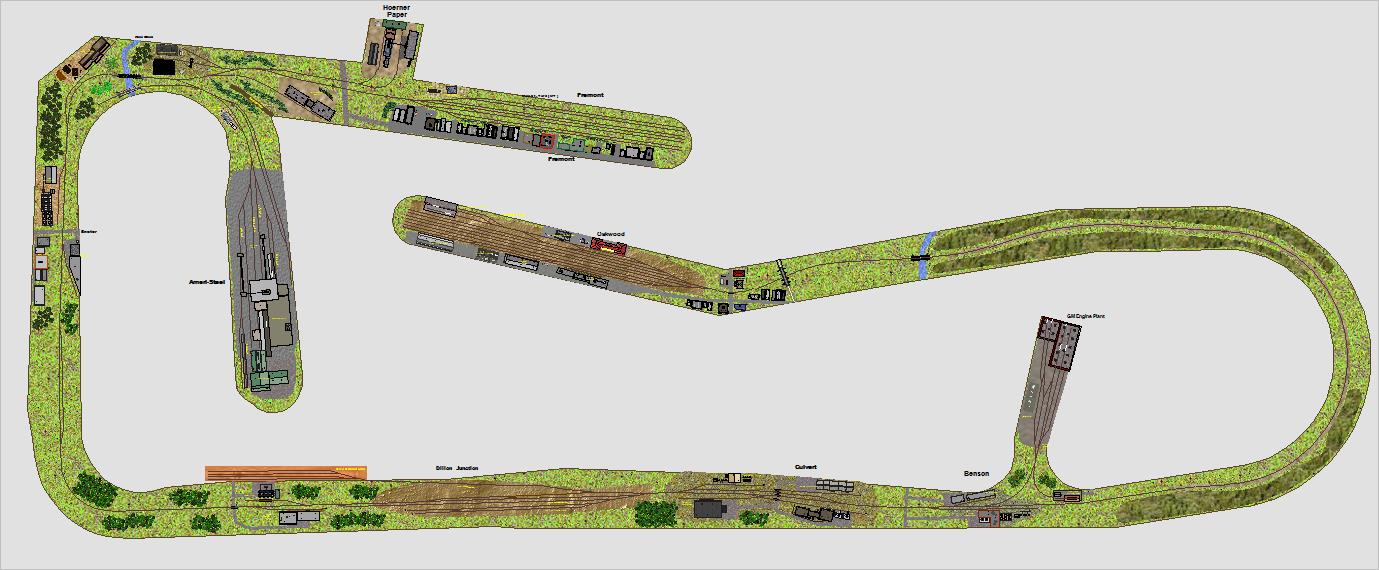 |
| 3 | Frisco Central Division | 53 x 102 | This is a modular FREMO style layout with plenty of operational potential based on the St. Louis-San Francisco Railway [SLSF], also known as the Frisco, which operated in the Midwest and South Central U.S. from 1876 to April 17, 1980 In the era we're trying to depict - 1965 - 1980, freight haulage provides the majority of the Frisco's revenue. The chief industries were the oil fields near Tulsa, coal at Coal Creek and some lumbering and grain operations as well. Fort Smith had a sizable yard in the Frisco's Central divison and much of the coal and lumber passed through this yard on its way to its end market. There are dedicated, coal and lumber drags along with mixed way freights for you to operate. |
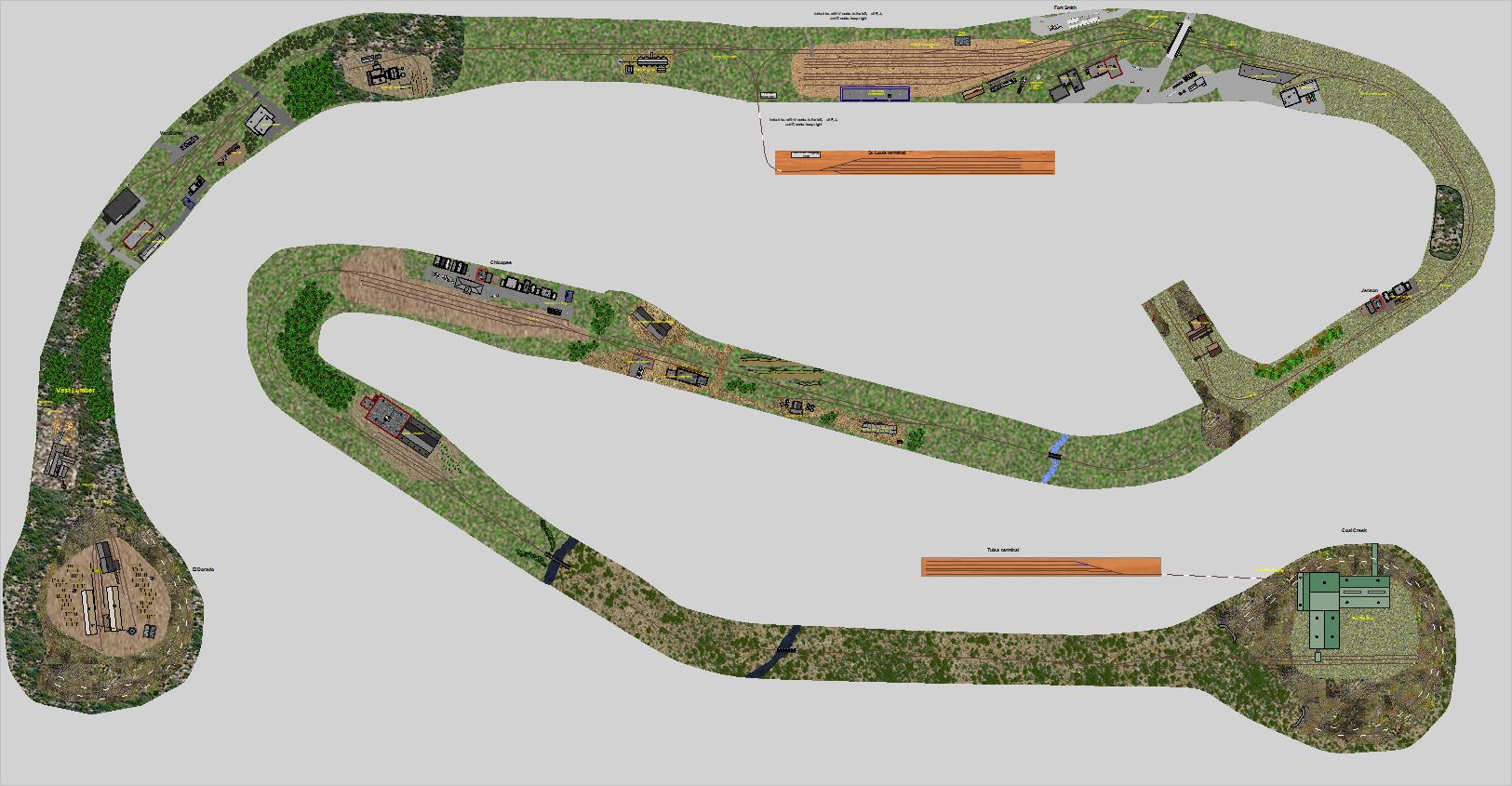 |
| 3 | GN Everett district | 25 x 31 | The GN Everett District design and track plan was created by Byron Henderson [used with permission]. The major operating center of the layout is the town of Everett, which boasts a small yard and three good-sized grain elevators. Grain elevator operations are also seen at New Flora and Tatanka, with the elevator tracks separated prototypically from the main track and siding. There is also an interchange with Southern Pacific RR, along with an at-grade crossing near New Flora. The Staging Yard above Everett provides plenty of capacity for through freight and passenger trains. This room sized granger railroad should offer plenty of operating interest while still preserving the "wide-open-spaces" feeling of the area with plenty of running room between major towns. The switch list is large but incorporates several trains whish would normally be operated independently. Look under the YardMaster folder "Sequenced Trains" for that version of this plan. |
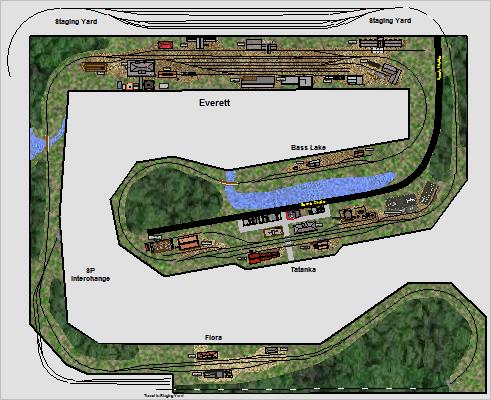 |
| 3 | GTW Pontiac Line | 28 x 32 | The Pontiac Line of the GTW travels west from Detroit to Chicago, through the industrial heart land of Michigan. The area is decorated with all types of secondary industries which feed into the area's giant auto manufacturers. Your day will take you from the Detroit staging area through this zone and heading west. | 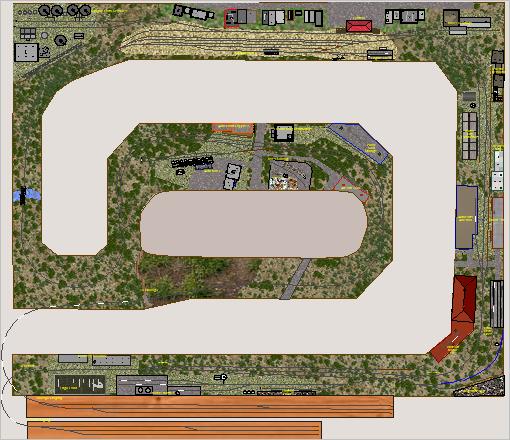 |
| 3 | Hagersville Branch | 15 x 18 | The Hagersville Branch of the CPR during the 1900 - 1930 period generated lots of resource loads, principally cattle and grain for the CPR. At the same time, as the area expanded, the demand for equipment, building supplies and essentials grew as well. This provided a good flow of inbound traffic for the railway. | 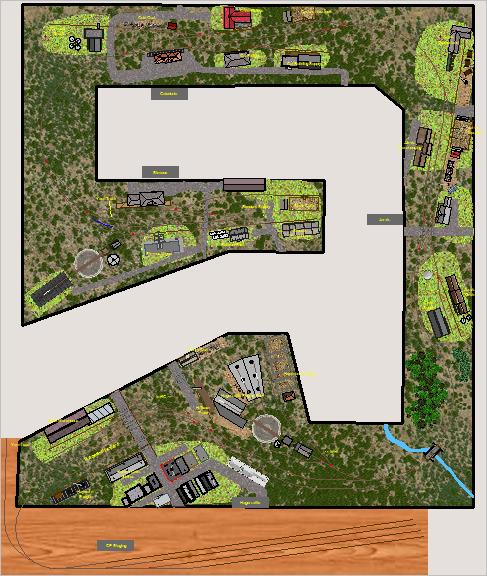 |
| 3 | Jonesbury District | 23 x 78 | Jonesbury District is a point to point layout. Formerly a double decker plan, we have redesigned the layout to a single level to facilitate a more complete operations plan. Cars are moved between Ekland Yard on the top left in an westerly direction headed to Jonesbury yard on the east side of the layout. There are 3 major customers - Farmers Co-op, Triangle Plastics and Marden Cement whose daily needs are handled by a unit train out of the Jonesbury Yard. Along the route there are several light and medium industries to be switched by the daily way freight. |  |
| 3 | Llareggub | 10 x 26 | Llareggub is a fictional 2ft gauge railway set in the North Wales hills. It was built to carry roofing slate from the quarries at Cefn Ddu to the sea at Llareggub and Porth Rhisiart. Although slate traffic still travels this route, the Standard Gauge railway has now arrived at Alt Yr Eryr. This has generated a completely new outlet with fish from the ports and produce from the dairy being routed through the transfer yard at Allt Yr Eryr to all the major cities of England. You start and end your day in the Engine Shed at Allt Yr Eryr. If there are trucks in the transfer roads, or wagons in the local yard requiring moving you should start with them. If not you should head out for Llareggub or Porth Rhisiart to collect loads for the interchange and empties for the quarry. Don't forget to check the quarry branch for outbound traffic at Cefn Ddu. |
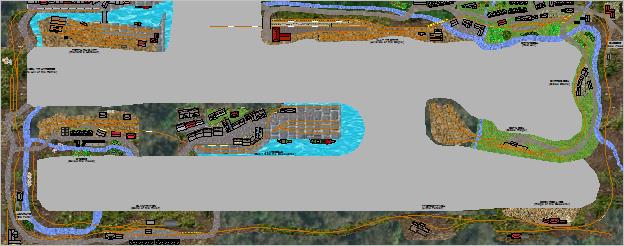 |
| 3 | Lubbock Industrial Districts | 26 x 37 | Our Lubbock Industrial Districts by David Barrow is an adaptation of his plan which appeared in Model Railroad Planning 2006. This free lanced, club sized plan looks at several major industrial districts on the ATSF in Lubbock, Texas. The double-tracked main line would normally see 5 or 6 through trains per shift along with 1 or 2 locals which switched the various industries. There are 4 industrial zones involved and not all of them have runaround tracks. So it is important that you "block out" your train before heading out from the classification yard. | 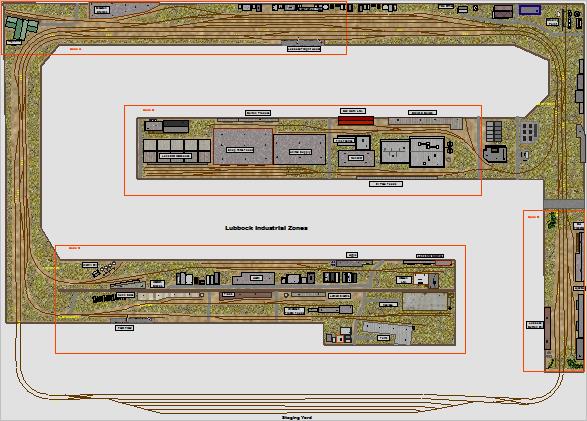 |
| 3 | Middlebury | 17 x 30 | This room sized Middlebury layout is based upon a much larger 2 deck plan by Byron Henderson. We have modified it to a single deck with the staging on the right side. There are several mixed light industries to service along with a coal mine and an interchange. As well, there is a small yard in Middlebury complete with a 2 stall engine house and RIP track for minor repairs. Enjoy! | 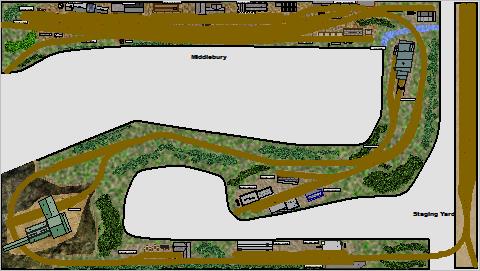 |
| 3 | MILW 14th Sub | 11 x 12 | This layout is modelled after a similar plan which appeared in Model Railroader magazine in 2012. As depicted, this point to point layout is based in the steam - diesel transition era of the late 1940s to the early 1950s. The twice daily car ferry serves as a floating 'yard' generally bringing in loads and empties required by the local industries. The OPS for this plan starts out with the GP7 switcher [ED63] unloading/loading the ferry cars. |
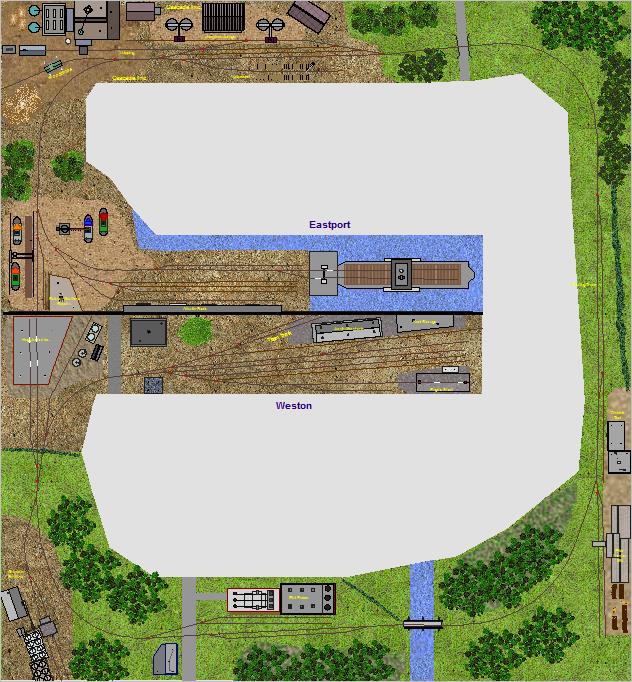 |
| 3 | Orangeville South branch | 48 x 65 | This is an entirely fictional CN subdivision based in south western Ontario. The Orangeville sub is rich in natural resources which require rail transport - a gypsum plant, a lumber operation, a grain mill, a gravel pit and a coal mine. The main yard [Olin Yard] for this sub is located in Orangeville which is also the main route to the southwestern division and close to an interchange with the CPR. |
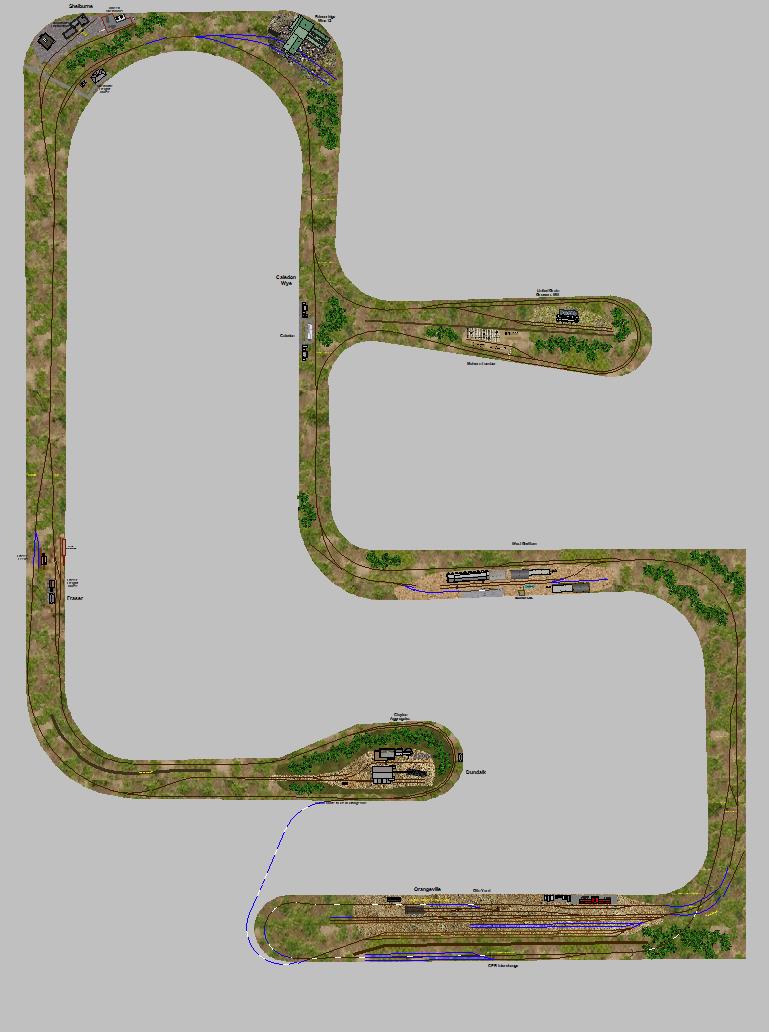 |
| 3 | Oxbow Sub | 27 x 33 | This fictional narrow gauge layout is based in northern Maine where the North Maine RR is a short line railway supporting a local sawmill, an ore mine and a medium sized foundry. This is rugged forest country and so the NMRR runs somewhat shorter trains of 6 - 7 wagons and a caboose. There is Mixed train which looks after the passenger and parcel services for the various stations along the line. | 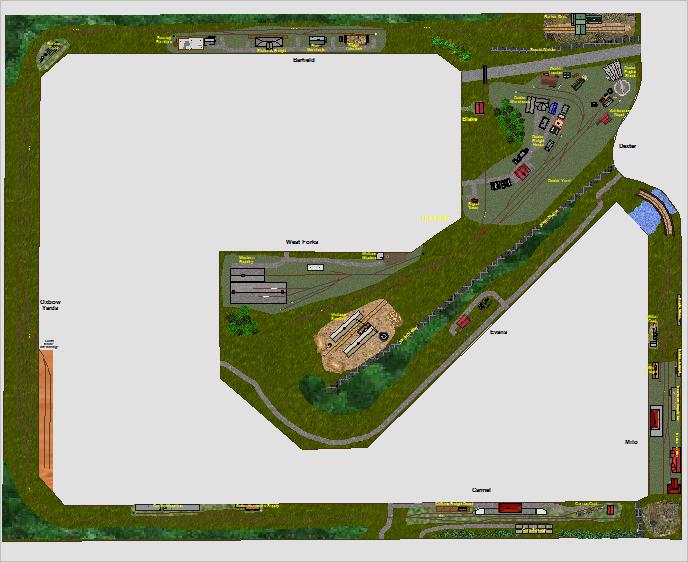 |
| 3 | Pecos Canyon Route | 12 x 12 | The Pecos Canyon route is a fictional narrow gauge short line operating in New Mexico in the early 1920s. There are 4 major towns along the route - Comstock, Del Rio, Langtry and Sanderson where this line connects and interchanges traffic with the DRGS. The main customers are cattle ranchers, a lumber mill, a small copper mine and several related general service industries. | 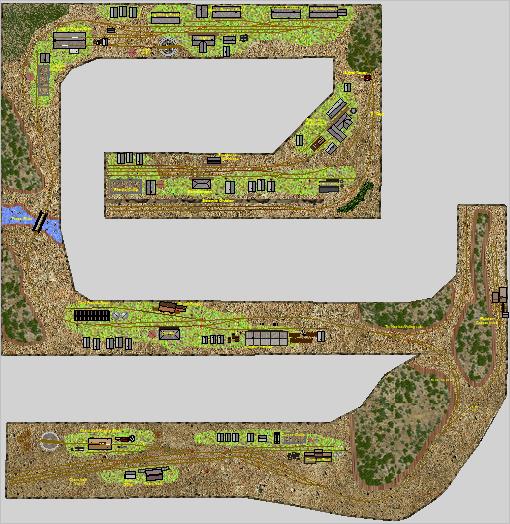 |
| 3 | Pelican Bay Railway and Navigation | 21 x 40 | Paul Scoles was a master railway builder known for his skills with creating scenery, buildings and industries and custom engines. His S scale Pelican Bay Railway and Navigation Company, narrow guage layout took over his entire basement. Paul designed his PBRN to feature operations in the late 1890s in the Pacific North West region. The action starts in Staging Yard at Silverado where trains are assembled and head out for Pelican Bay and on to Klamath. You should plan on setting up for about 6 trains [2 or 3 in Silverado, 1 or 2 in Pelican Bay and another in Klamath] to handle the traffic for the day. Enjoy! |
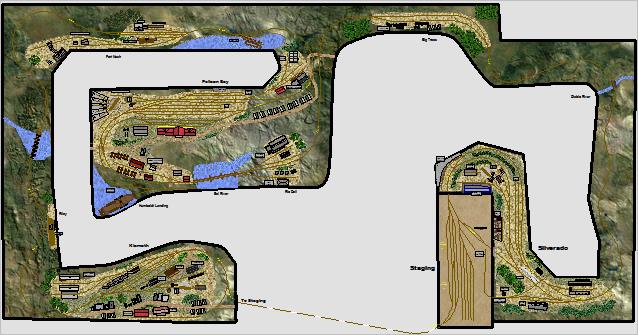 |
| 3 | Pittsfield Division | 43 x 63 | The club sized plan is based on only part of a very large FREMO display layout from 2016. The time period is the modern diesel era. The action is centered on the Pittsfield Yard in a major city in America's so-called Rust Belt. The main customers of the railroad are a cluster of steel based industries in the city of Morgan. There are two small branches headed to Carlyle and Huston and their local rail-served customers. There are also some smaller rail served clients in Newbury, Everest and Bedford at the other end of the division. While passenger service has long since given way to inter-state buses, there are still a good number of industries along the route to keep the local roadcrews busy. |
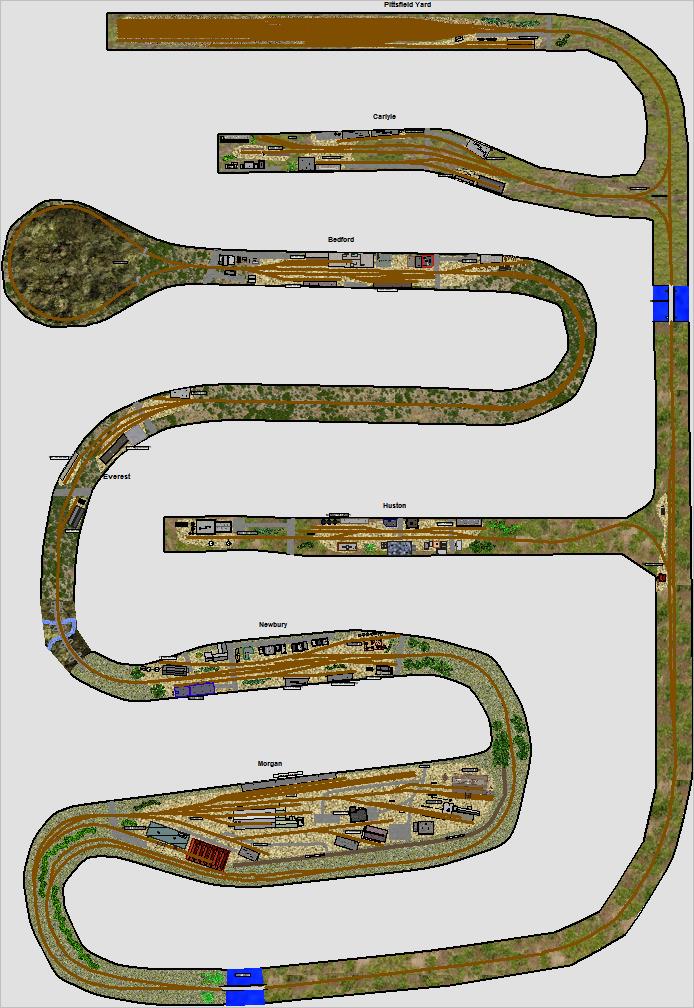 |
| 3 | Pureland Industrial Complex | 29 x 54 | Pureland Industrial Complex, which opened in 1975, is a 3,000-acre industrial park located in Logan Township in Gloucester County, New Jersey near I-94. SMS Rail Lines,which is a regional shortline carrier based in Pureland, services the complex and interchanges with Conrail Shared Assets Operations which also connects to Penns Grove Secondary and the national rail network. There are several large customers who have major warehousing and production facilites located in this busy complex. |
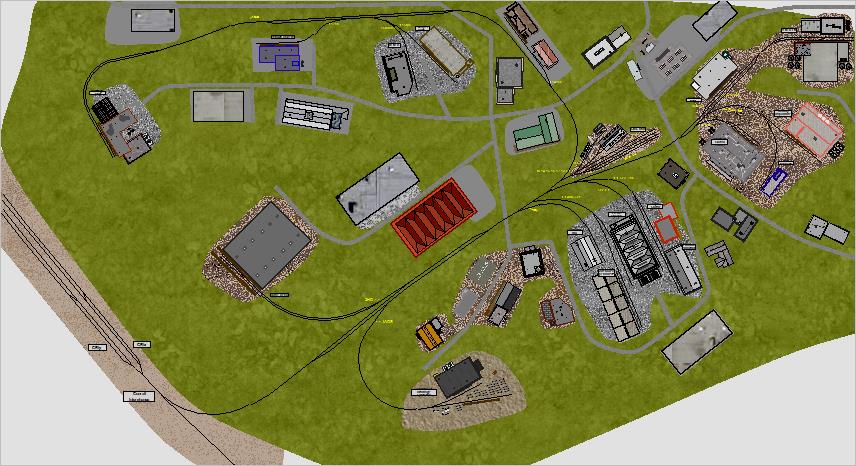 |
| 3 | Rock Plain branch | 21 x 22 | Rock Plain Branch is a 3 ft. narrow gauge railway set in the high plains of Colorado in the 1920s. The Rock Plain Railway is essentially a mining railway. So you will see some sizeable trains running over the rugged hill country to service some local industries along with the two major ore mines and a foundry in the region. There is an interchange with the DRGS at Woody Creek where many cars are exchanged daily. There are two mine /foundry runs - one by the DRG and the other by the Rock Plain Railway[RPR] which operate on alternate days. The RPR also has its Hewson Turn and the Woody Creek Turn which stop at all industries along the route. |
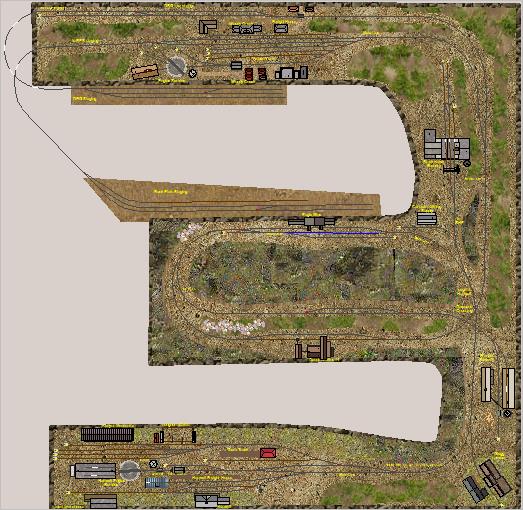 |
| 3 | Rodgers Junction Branch | 31 x 81 | This extensively modified layout is directly inspired by a modular FREMO layout which was set up for an exhibition in Rodagau, Germany in 2007. There are 3 large customers on this line: Craven Foods in Cranpool; Big Bear Mines which generates 15-25 loads daily in unit trains; and Fortress Cement which also receives/generates a large number of loads of cement and gravel. Fortress also has its own switcher to shunt cars around their property as needed and to assist the road crews regularly. The unit trains for Big Bear Mines and Fortress Cement originate on the west side of Milton yard. You may run them individually or add other cars to them per your switch list. |
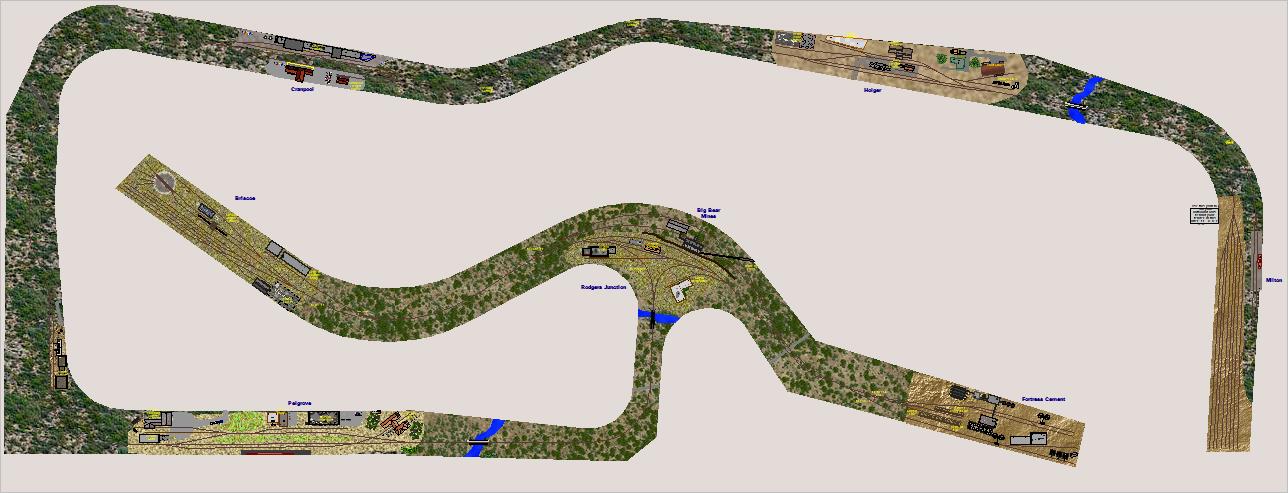 |
| 3 | Stratford sub | 16 x 21 | This layout is inspired by several narrow gauge layouts. The main focal point is the C&S Interchange where freight and passenger traffic are exchanged. Any freight cars coming from the C&S are blocked for local customers when they reach Garfield yard. Trains generally run 3 to 4 times per week depending upon seasonal and customer demands. There is little passenger service along the Stratford sub and these needs are met with with the Mack railbus service or the multi-purpose Goose 7. The C&S sends a weekly mixed train along the sub which adds variety and some challenges. |
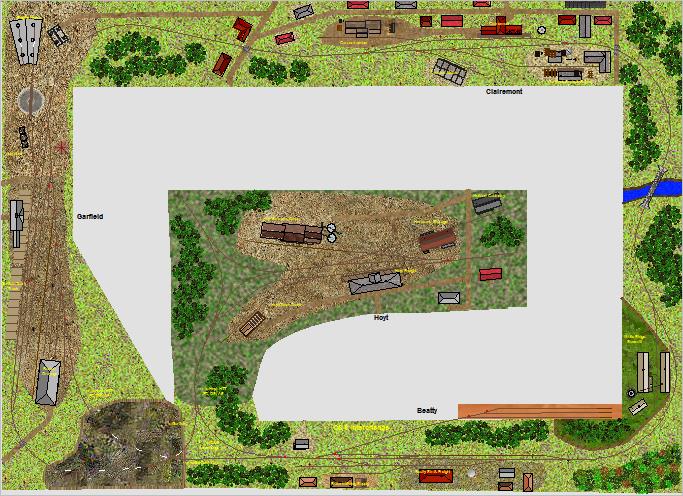 |
| 3 | Welbeck Sub | 33 x 34 | The Welbeck Sub is a typical American rail line. It provides transport services to a couple of medium sized coal mines, a small ore mine and a large lumber camp. As well, there are quite a few other resource based industries to serve over this large 3 deck plan. Don't let the high car count discourage you here. Many of the cars are moved in blocks to the coal and ore mines and from the lumber camp to the sawmills and back again. Try to run those trains first and then run the Pedlar last. Remember, you can use F1 at any time to save your progress through the switch list |
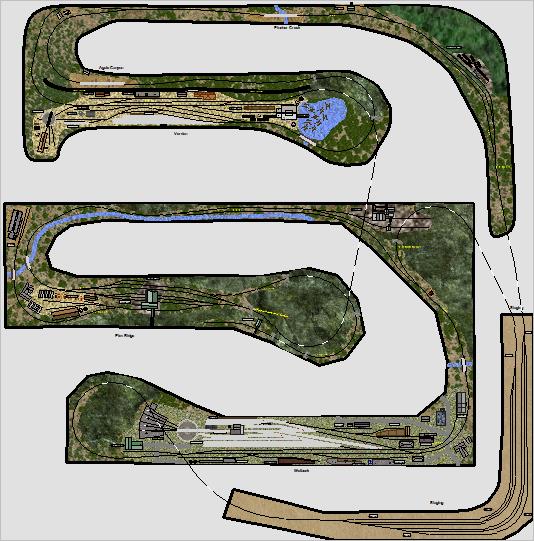 |
| 3 | West Coast Branch Line | 11 x 107 | This layout is a modified version of Richard Fletcher's Sandy River & Rangeley RR layout but set in England. It is an out and back design of an imaginary single track branch line running south to north during the 1920 - 1930 period. There is one major industry - a coal mine which generates about 20 loads per day. There are other typical industries like livestock docks, goods sheds,and coal staithes to service along with a mixed group of mid-sized industries. |  |
| 3 | Wilkens Sub | 41 x 59 | This club sized Fremo layout is set in the late steam era. Most rail traffic enters the scene at Wilkens Yard and runs through the sub as far as Jackson Yard. Some cars are dropped at the nearby DRGS interchange. The main traffic sources for the sub are: National Coal, Gordon Gypsum, Prairie Grain and Ponderosa Cattle. There is usually a unit train to handle this volume first. It is followed by "sweeper" which handles pulls and spots from its switch list. Some carefully planning is required since runaround tracks may not be close at hand when needed. | 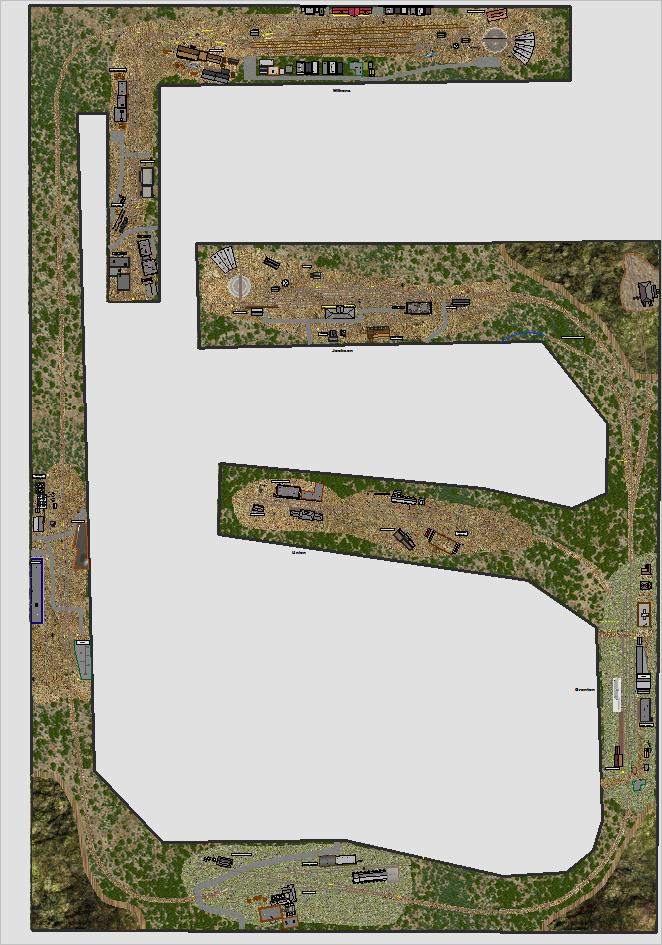 |
| 3 | Winston Division | 20 x 48 | Winston Division is a club sized plan which featues a good sized Staging yard, a division yard and a smaller branch yard. There is plenty of bridge traffic moving between these yards but, there are also some block trains to process daily - serving the coal mine, the grain mill and a couple of smaller sites. Finally in Winston, High Point and Greensboro, there are a variety of medium and light industries which generate regular traffic. Your tasks will be to dispatch and operate a branch switcher, a yard job or two, and drive the unit trains to complete your work assignment. Enjoy! |
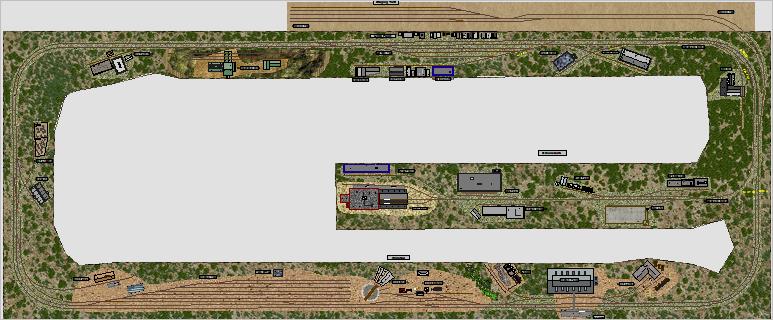 |
| 3 | Yancy | 16 x 29 | Yancy is a fictional narrow gauge line of the Colorado Southern Railroad which operated from 1898 - 1908 as a Class 1 railroad when it was absorbed into the CBQ railroad and much later, into the BN empire. At the turn of the previous century, the CS was enjoying modest success moving freight over the hill country from north west Texas, through New Mexico, Colorado and up to Wyoming. | 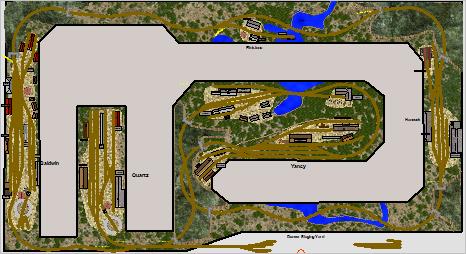 |
| 4 | Ajax Junction | 6 x 24 | The Ajax junction is an imaginary meeting point in central Pennsylvania between the PRR and the NYC in the late 1940s. Both railroads have customers in the town and work them, while they deliver cars to the interchange tracks for each other. |
 |
| 4 | Burnham IL | 12 x 24 | This room sized layout is loosely based on Burnham, Illinois in the late 1940s steam transition era. It was a mid-sized, mixed industrial city within the metro-Chicago area. The main line runs through the city and there is a network of staging tracks connecting to various local industries, including a large brewery complex. All rail traffic originates from the staging area which in turn simulates traffic both east and west bound. | 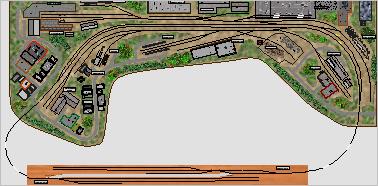 |
| 4 | Dilligence | 12 x 18 | I wouldn't be surprised if you have never heard of the Dilligence division of the British Columbia Railway. The branch serves the town of Dilligence which lies somewhere to the west of Quesnel and somehow never quite made it on to the maps of Cariboo country. The period is the early 1970's just after the BCR took over from the Pacific Great Eastern. On Mondays, Wednesdays and Fridays you operate the two car Budd RDC passenger set from Dilligence to Quesnel. Once the RDC has reached its destination you can generate a new switchlist and operate the Kettle Valley Turn from Quesnel Staging. On Tuesdays, Wednesdays and Fridays you must return the RDC to Dilligence and generate a new switchlist for the Quesnel Turn using an engine from the shed at Dilligence. |
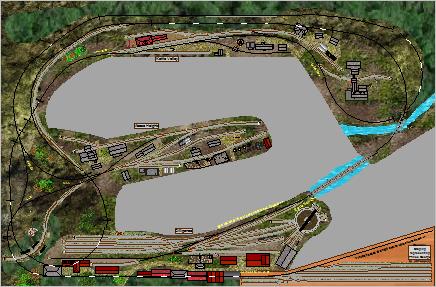 |
| 4 | Elkhart | 25 x 27 | This room sized layout is based on a fictional town set in the 1930s in north eastern Maine which is served by a 2 foot narrow gauge railway linking it to the towns of Howland and Lincoln where there is an interchange with a larger narrow gauger - the BSR railway. Elkhart is a mid-sized town with several local industries to serve. There is a mixed train for some passenger and parcel services as well as a pedlar train for special runs for the large lumber mill and stock yard and the merchants in Elkhart. Lincoln is a smaller town but with a few rail-served local industries, along with a livestock dealer and a busy lumber / sawmill operation. |
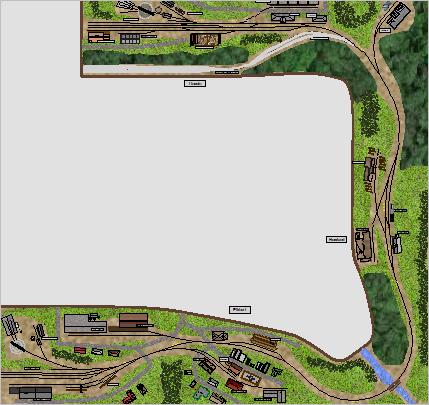 |
| 4 | ffarquhar | 7 x 11 | Ffarquhar was the home layout of the Rev W Awdry, author of the 'Thomas the Tank Engine' series of children's books. Ffarquhar station was a removeable section which regularly toured the exhibition circuit and is currently preserved at the Narrow Gauge Railway Museum at Wharf Station on the Talyllyn Railway in Wales. To adapt the layout for TrainPlayer we have taken some liberties with the fiddle yards but the main scenic section attempts to replicate the original track arrangement. Thomas's branch line runs from Knapford to Farquhar via Elsbridge. You can choose any engine to run each of the three trains, starting with the Quarry Turn, this is followed by a passenger run to Ffarquhar and back and finally the daily goods service. You should return the engine for servicing to Knapford Junction at the end of each run before generating your next job. All cars displaying labels should be pulled and spotted on the tracks with the corresponding labels. |
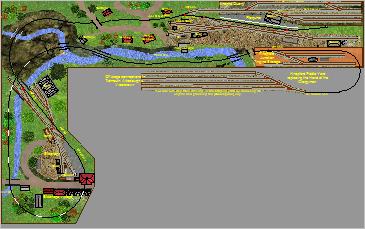 |
| 4 | Frisco Central Division | 53 x 102 | This is a modular FREMO style layout with plenty of operational potential based on the St. Louis-San Francisco Railway [SLSF], also known as the Frisco, which operated in the Midwest and South Central U.S. from 1876 to April 17, 1980 In the era depicted - 1965 - 1980, freight haulage provides the majority of the Frisco's revenue. The chief industries were the oil fields near Tulsa, coal at Coal Creek and some lumbering and grain operations as well. Fort Smith had a sizable yard in the Frisco's Central divison and much of the coal and lumber passed through this yard on its way to its end market. There are dedicated, coal and lumber drags along with mixed way freights for you to operate. |
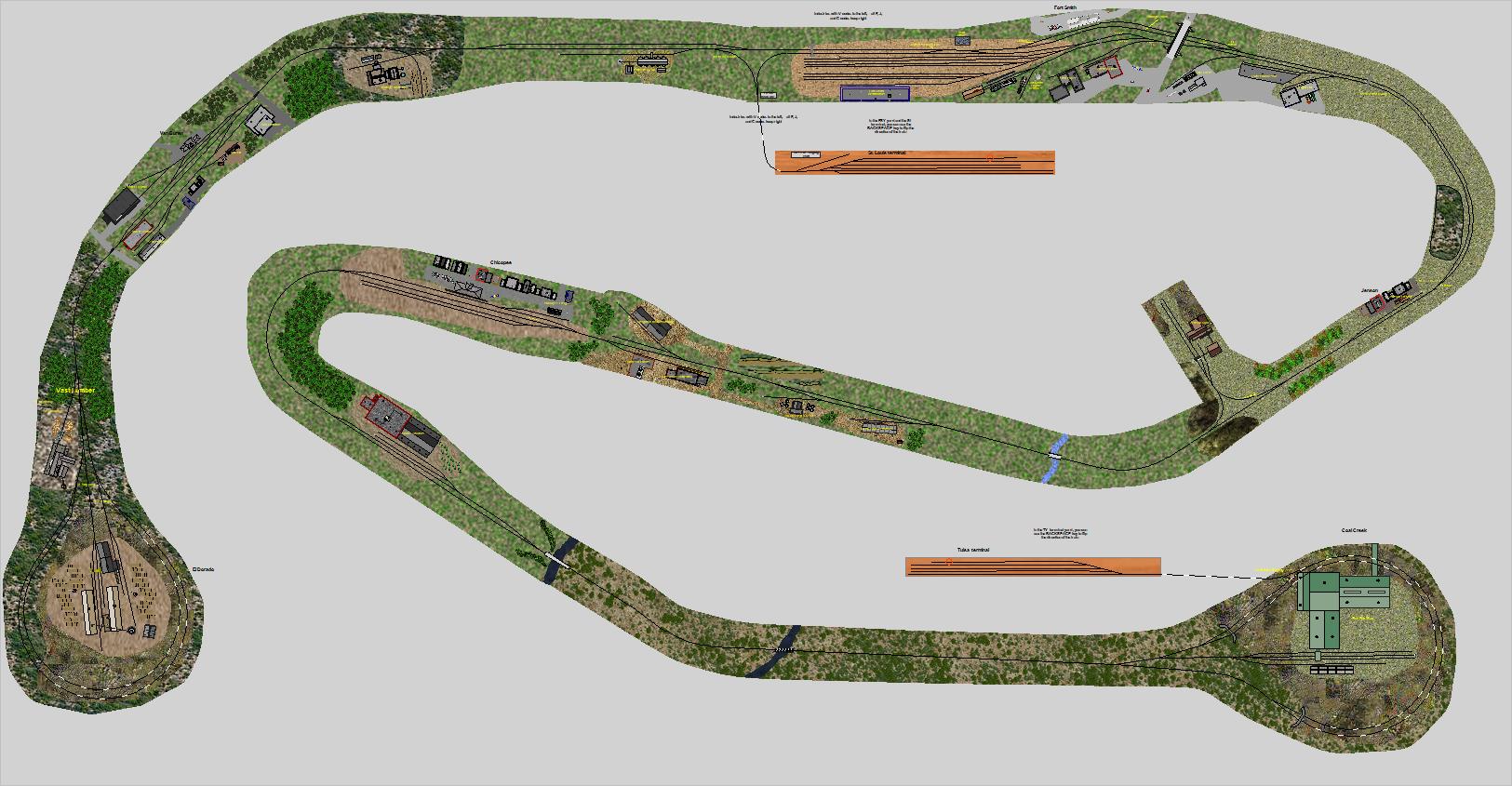 |
| 4 | Georgia Northeastern | 20 x 42 | The Georgia Northeastern Railroad is a short line freight railroad which runs from the town of Elizabeth, Georgia (now within Marietta) to the city of Blue Ridge, Georgia. Goods hauled are mostly timber, grain, poultry, and marble products. The main headquarters for the GNRR is in Marietta and its main Elizabeth Yard. The track work for this layout is inspired by Tom Klimoski's plan of the same name. |
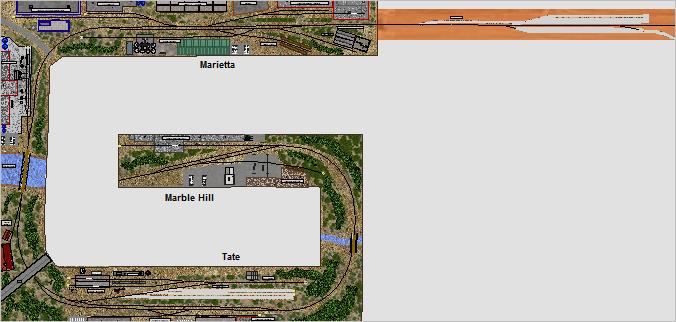 |
| 4 | GN Everett district | 25 x 31 | The GN Everett District design and track plan was created by Byron Henderson [used with permission]. The major operating center of the layout is the town of Everett, which boasts a small yard and three good-sized grain elevators. Grain elevator operations are also seen at New Flora and Tatanka, with the elevator tracks separated prototypically from the main track and siding. There is also an interchange with Southern Pacific RR, along with an at-grade crossing near New Flora. The Staging Yard above Everett provides plenty of capacity for through freight and passenger trains. This room sized granger railroad should offer lots of operating interest while still preserving the "wide-open-spaces" feeling of the area with plenty of running room between major towns. |
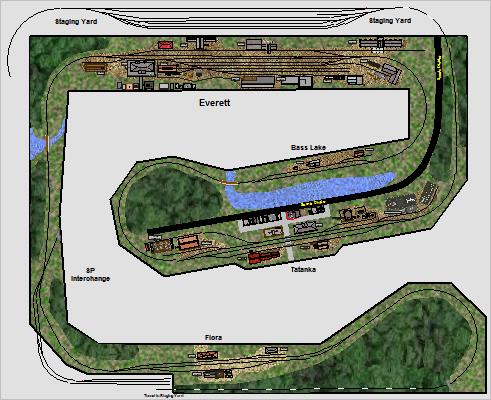 |
| 4 | Gobblers Knob | 13 x 25 | Gobblers Knob is a fictitious subdivision of the 2ft Gauge SR&RL Railroad extending north from Bigelow to service the sawmill complex at Gobblers Knob and to connect the railroad to the slate quarrying industries in the northern mountainous region of Maine. Outgoing traffic is comprised mainly of pulpwood and slate, and the Ahern Slate Quarry requires copious amounts of sea sand to be brought in for slate polishing. You will operate either the Daily Mixed train from Bigelow North to Naylor via Gobblers Knob, or alternatively the Pulpwood and Logging train which usually operates during the night. The Daily Mixed train must stop at all passenger stations in accordance with the sequence shown on the top of the combine. All townships will be visited in numerical order and you should block your train accordingly before heading out. You are also free to run any extra trains that you deem necessary to complete your switchlist. Your engine has been prepared by the hostler at the Bigelow North engine shed and you should start by heading south into the Bigelow yard to assemble your northbound train. |
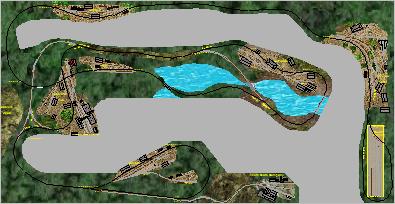 |
| 4 | Llareggub | 10 x 26 | Llareggub is a fictional 2ft gauge railway set in the North Wales hills. It was built to carry roofing slate from the quarries at Cefn Ddu to the sea at Llareggub. Although slate traffic still travels this route, the Standard Gauge railway has now arrived at Alt Yr Eryr. This has generated a completely new outlet with fish from the ports and produce from the dairy being routed through the transfer yard at Allt Yr Eryr to all the major cities of England. You start and end your day in the Engine Shed at Allt Yr Eryr and are responsible for one of the five trains which run each day. #G1 The daily goods service to Llareggub. #P2 The return passenger service to both Llareggub and Porth Rhisiart. #Q3 The Quarry service between Cefn Ddu, Llareggub and Porth Rhisiart. #G4 The daily goods service to Porth Rhisiart. #P5 The second passenger service to Llareggub and Porth Rhisiart. All trains operate as turns returning to Allt Yr Eryr on completion of their run. You can choose any engine for your task from the shed at Allt Yr Eryr. |
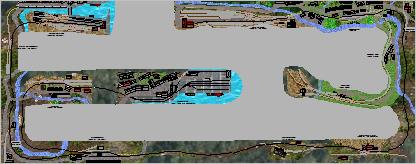 |
| 4 | The Sandy River and Rangeley Lakes RR | 13 x 32 | Promoted as the Maine Scenic Route, the Sandy River and Rangeley Lakes Railroad operated in Franklin County, Maine, between 1879 and 1936. It was the largest of the Maine "Two footers" and in its heyday had more than 115 miles of two foot gauge track. This TrainPlayer layout is an attempt to recreate some of the nostalgia. On this layout it is permissible to use the Yard Goat at Phillips or Farmington for assistance with switching the yard. You may also use any additional engines found on the branch lines. You start your day at the Farmington transfer sidings and should start by moving the passenger combine to the platform for loading. There are three different routes for you to operate, Farmington to Rangeley and back. Farmington to Kingfield and back. And Kingfield to Bigelow (there is currently no passenger service on the Bigelow branch but you will often find a couple of passengers riding in the caboose). |
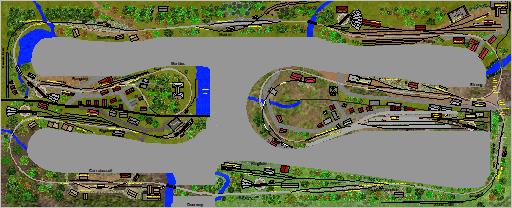 |
| 4 | Midthorpe Branch | 13 x 18 | Midthorpe is based on a Trainplayer layout originally designed by B Pigozzo in July 2013, modified for YardMaster in August 2016 and updated for YardMaster 3 in September 2017. Your day starts in the staging yard which represents the junction with the mainline. You are responsible for all traffic on this Branch Line which is handled by four trains. 1. A short block train to exchange empty cars for loads at Skelly Aggregates. 2. A return passenger service from staging Midthorpe via Highthorpe. 3. Operations in the Skelly Aggregates quarry to the swap loaded cars for the empties. 4. The daily goods service servicing all industries and station facilities on the branch. |
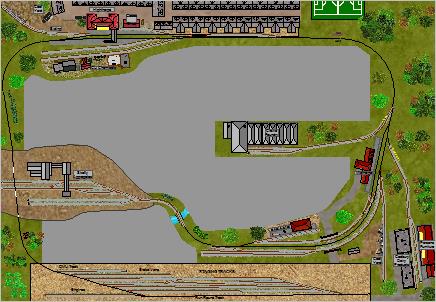 |
| 4 | Mount Brydges Branch | 2 x 34 | The Mount Brydges Branch is a fictitious line off of the New York Central RR in upstate New York. It services several mixed light industries and a small sorting yard in the town. The Branch has connections to the east for New York City and, in the west to routes heading to Chicago. There is daily fast freight in each directon which stops to set out and pick up cars at Elwood Yard. Once the through train has completed its run, the local Blue Liner is tasked to service all the industries in the Mount Brydges area, these include a small interchange on the west side of town which handles some regular traffic to the Penn Central RR. Passenger service has ended but local freight traffic is still robust. An engine for the through trains can be found in in the appropriate staging area. All local work is handled by the Blue Liner which is based in Elwood Yard. |  |
| 4 | Packers Bay | 5 x 25 | This room sized plan, based on the modern era,incorporates some typical traffic patterns for a mid-sized port city in the central USA called Packers Bay. There is a eastbound fast freight which services both the grain mill and the cement plant on its way to Chicago. It also includes some bridge traffic flowing from Minneapolis to Chicago. The westbound fast freight speeds through town to return empty hoppers to the Minneapolis area. Packers Bay receives a block of cars bound for local customers, all of which will send and receive several car loads daily. There is a modest classification yard called "B Yard" in the west of the city where trains / cars are sorted and temporarily stored while they are in transit. |
 |